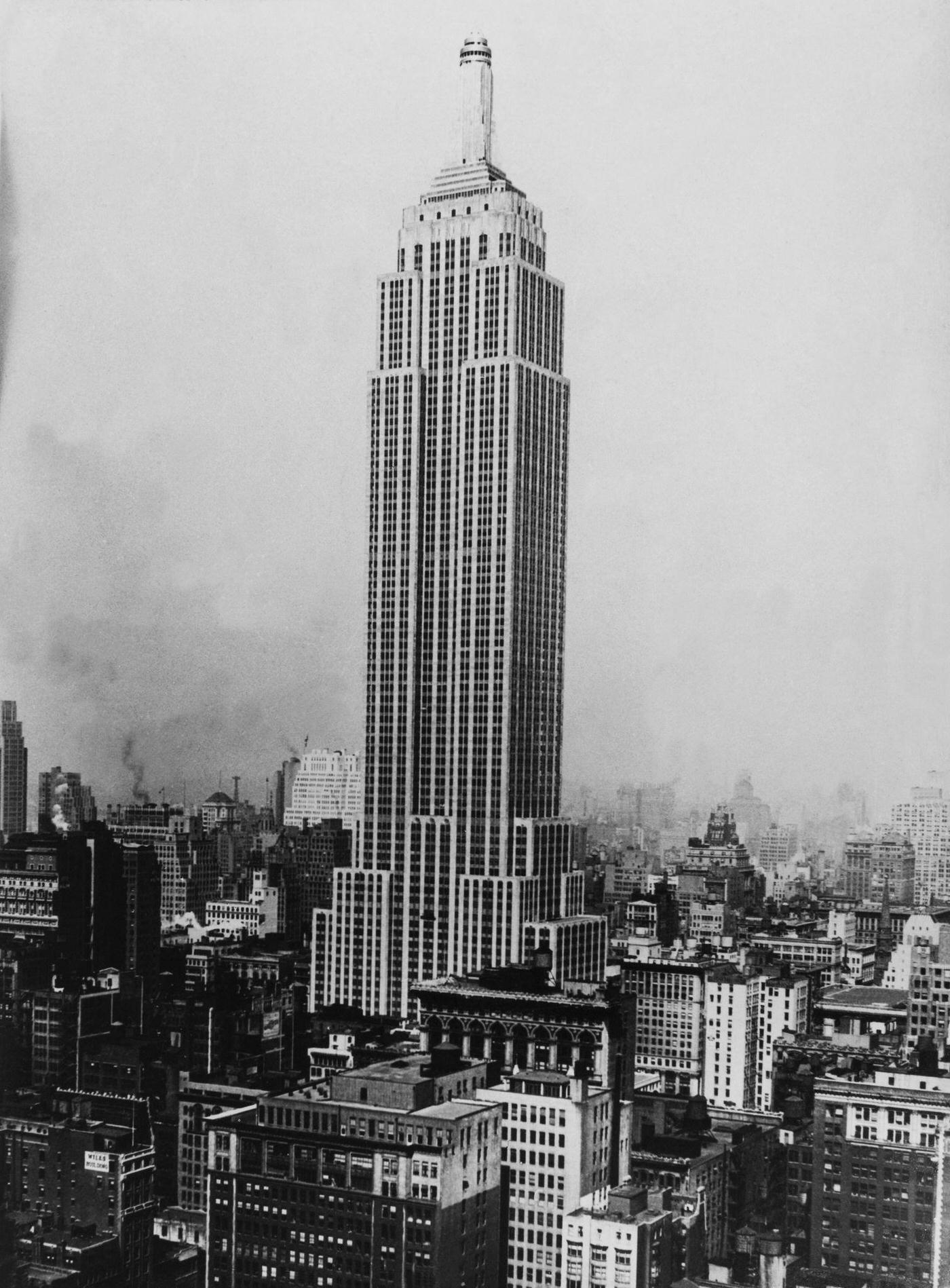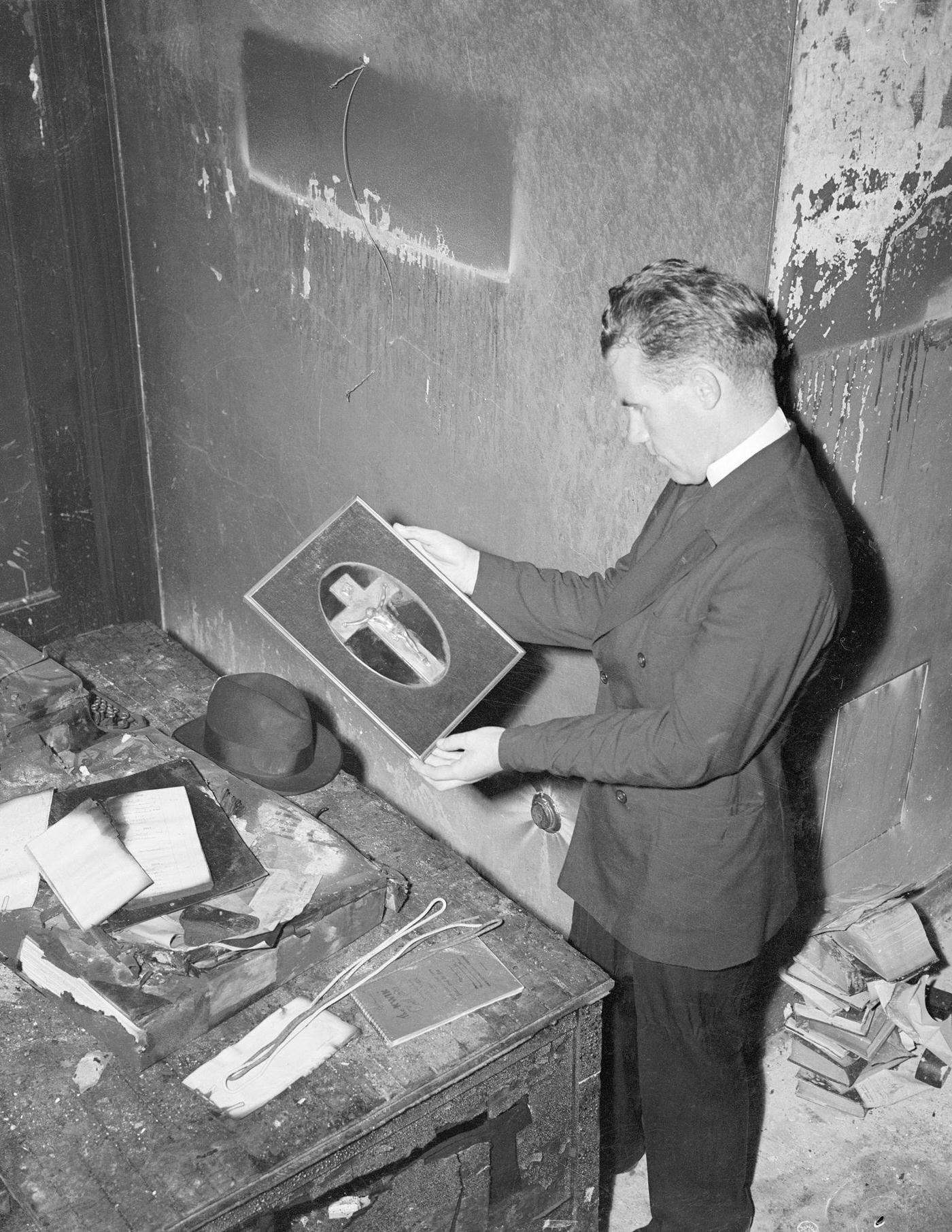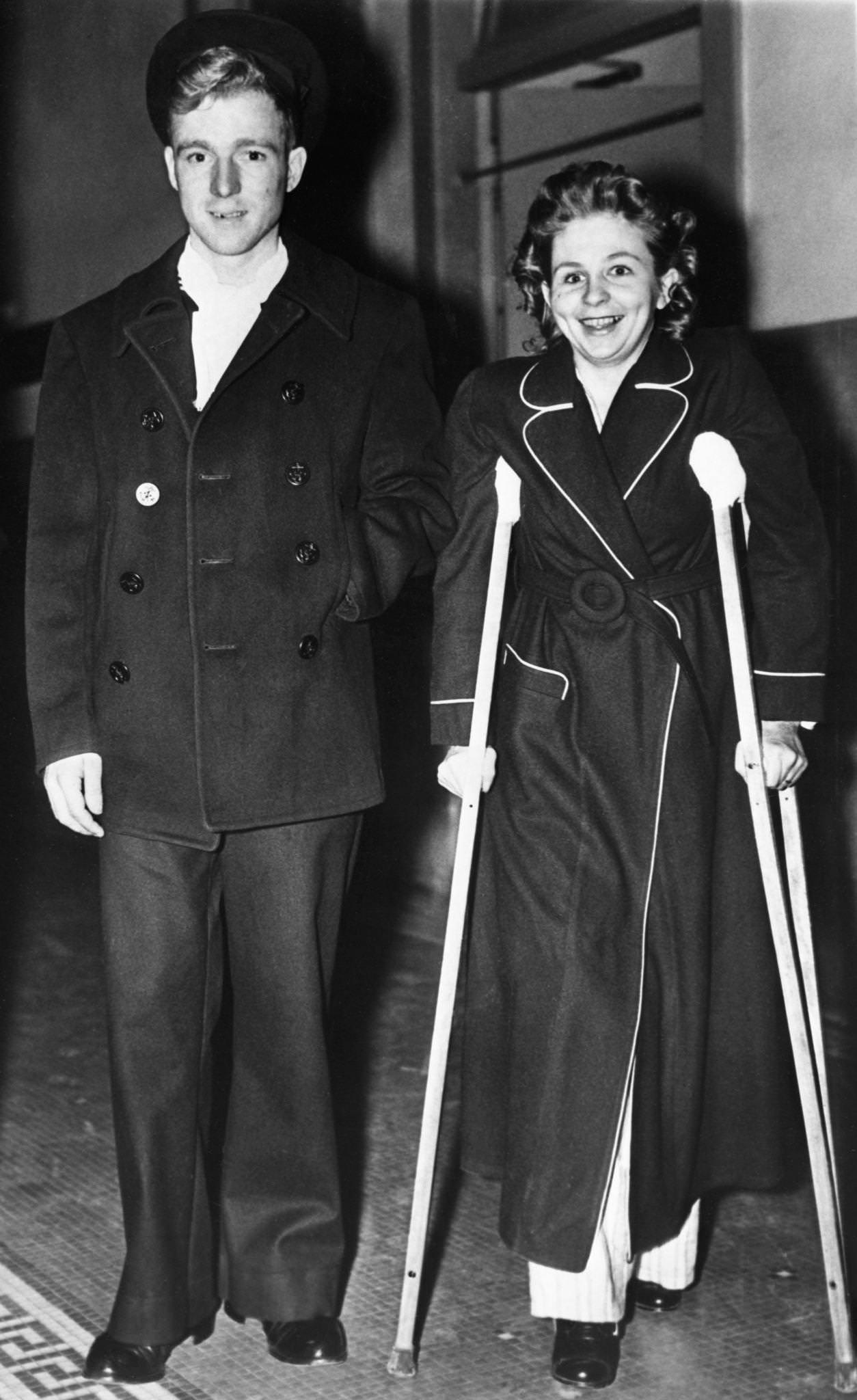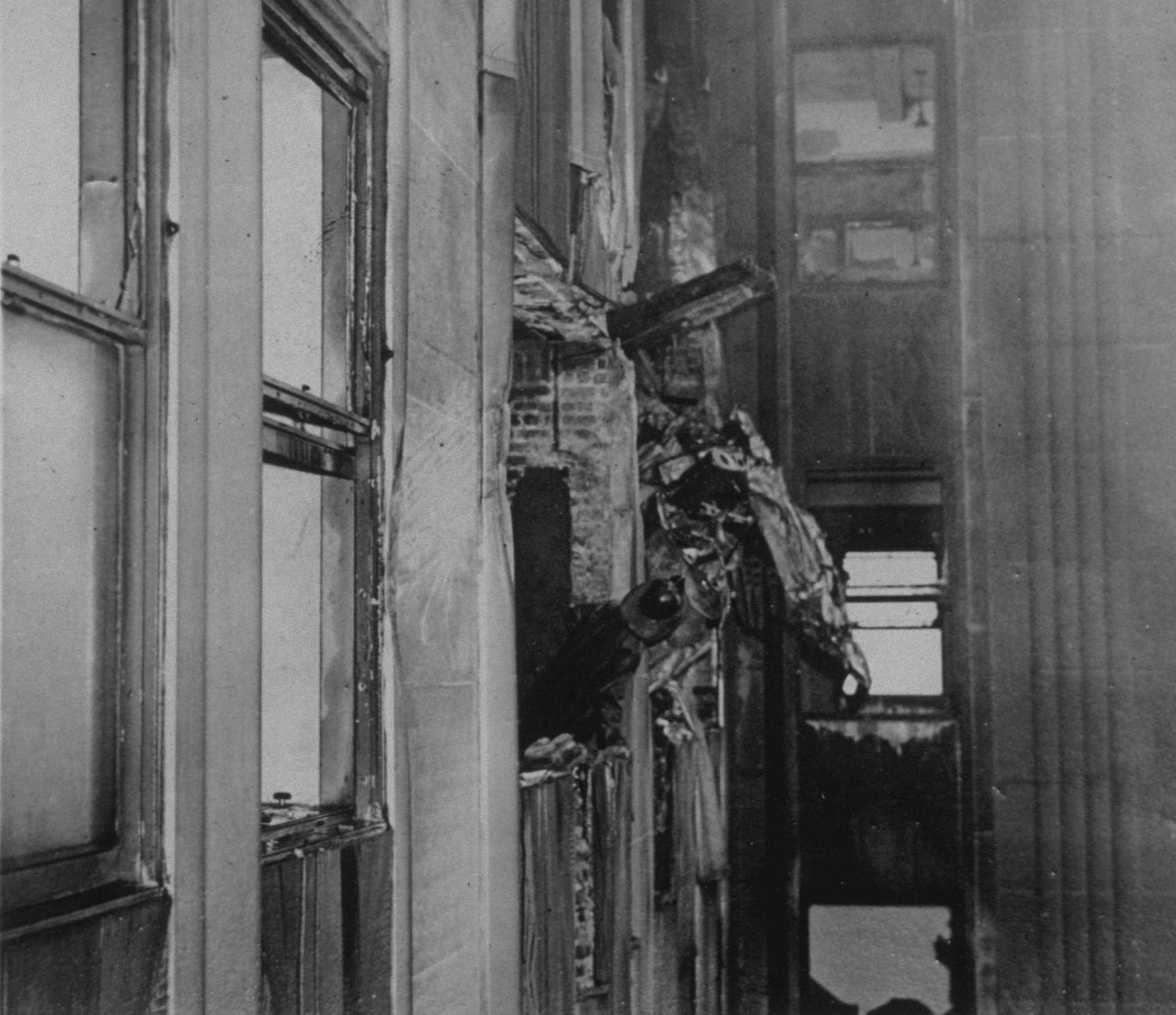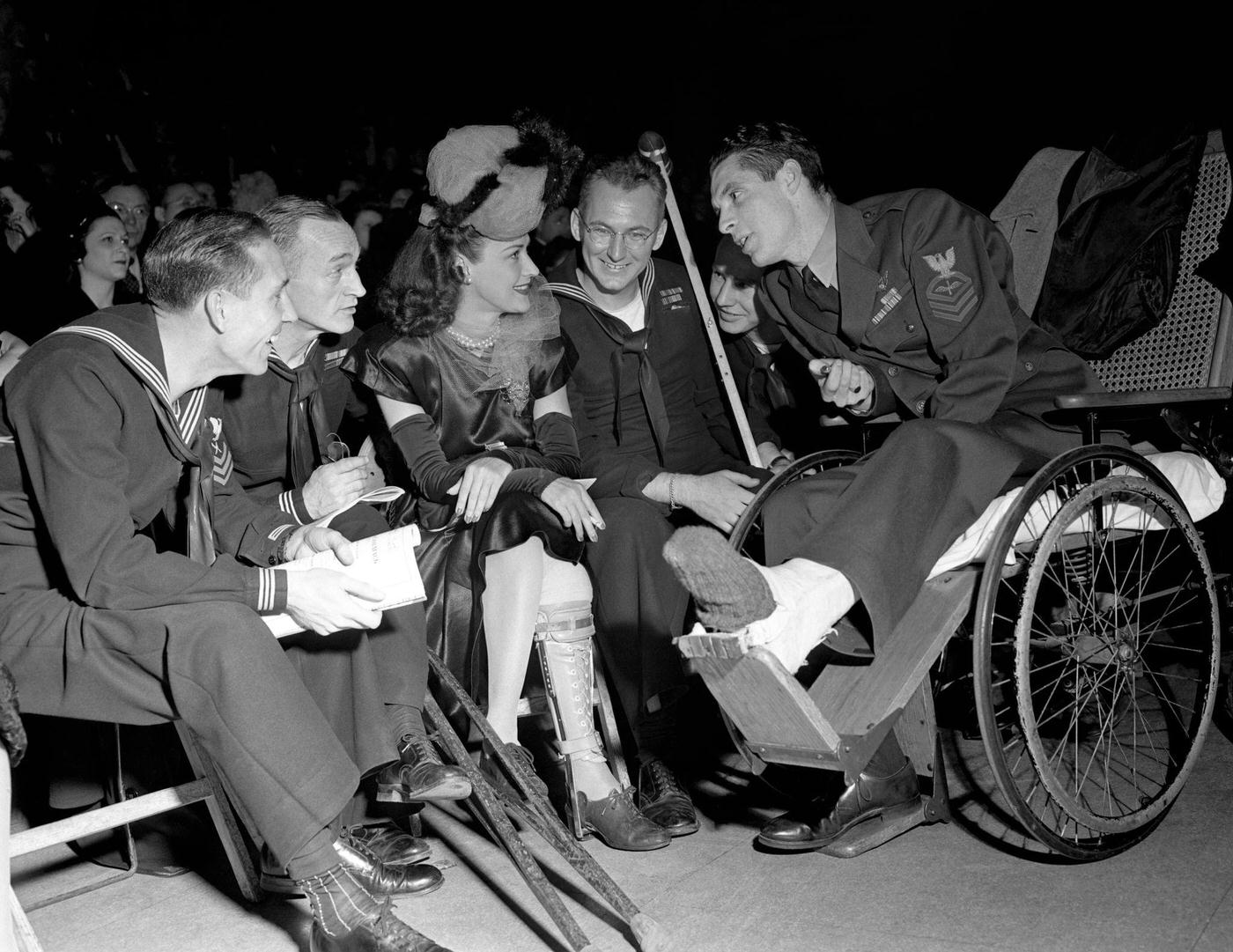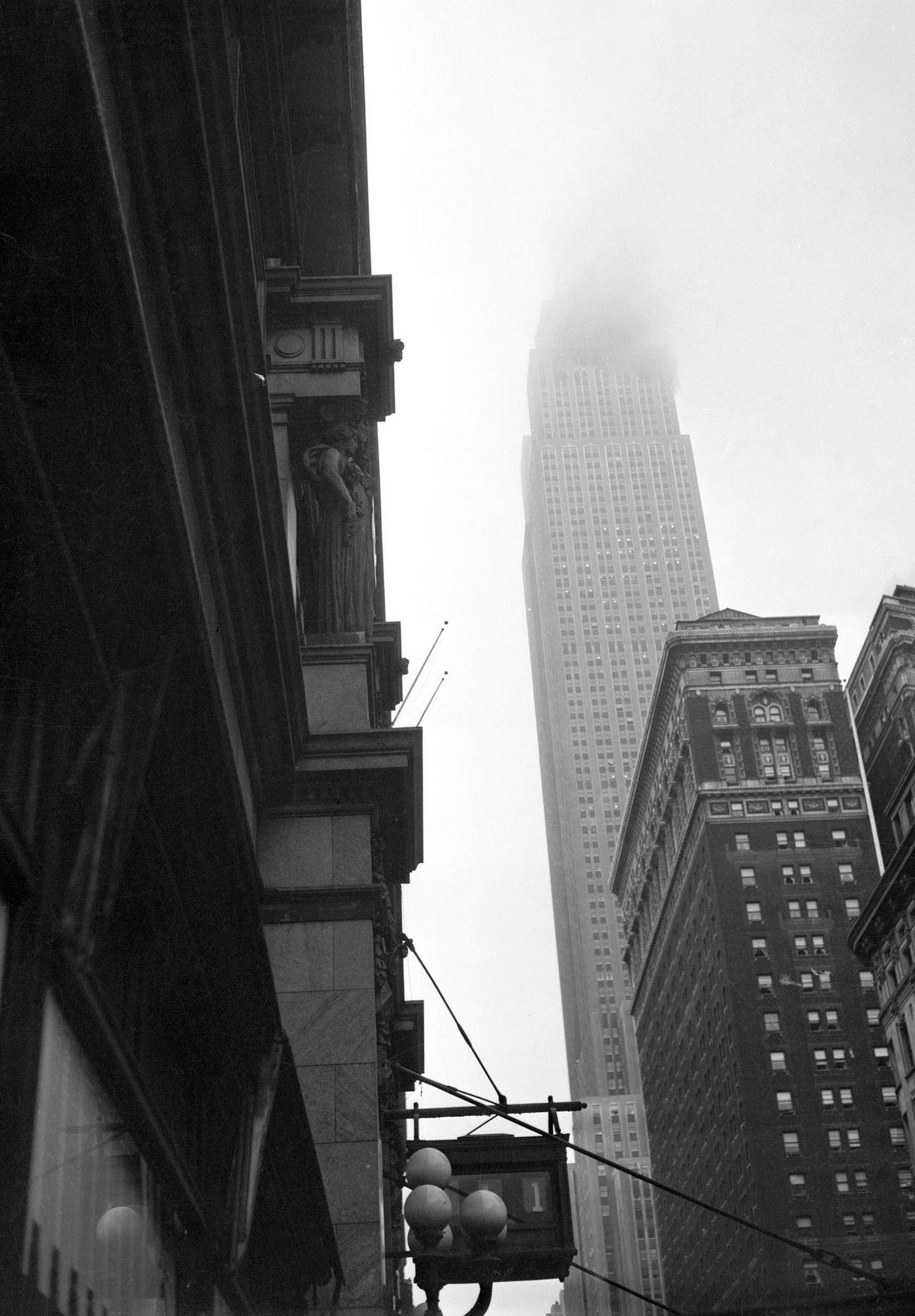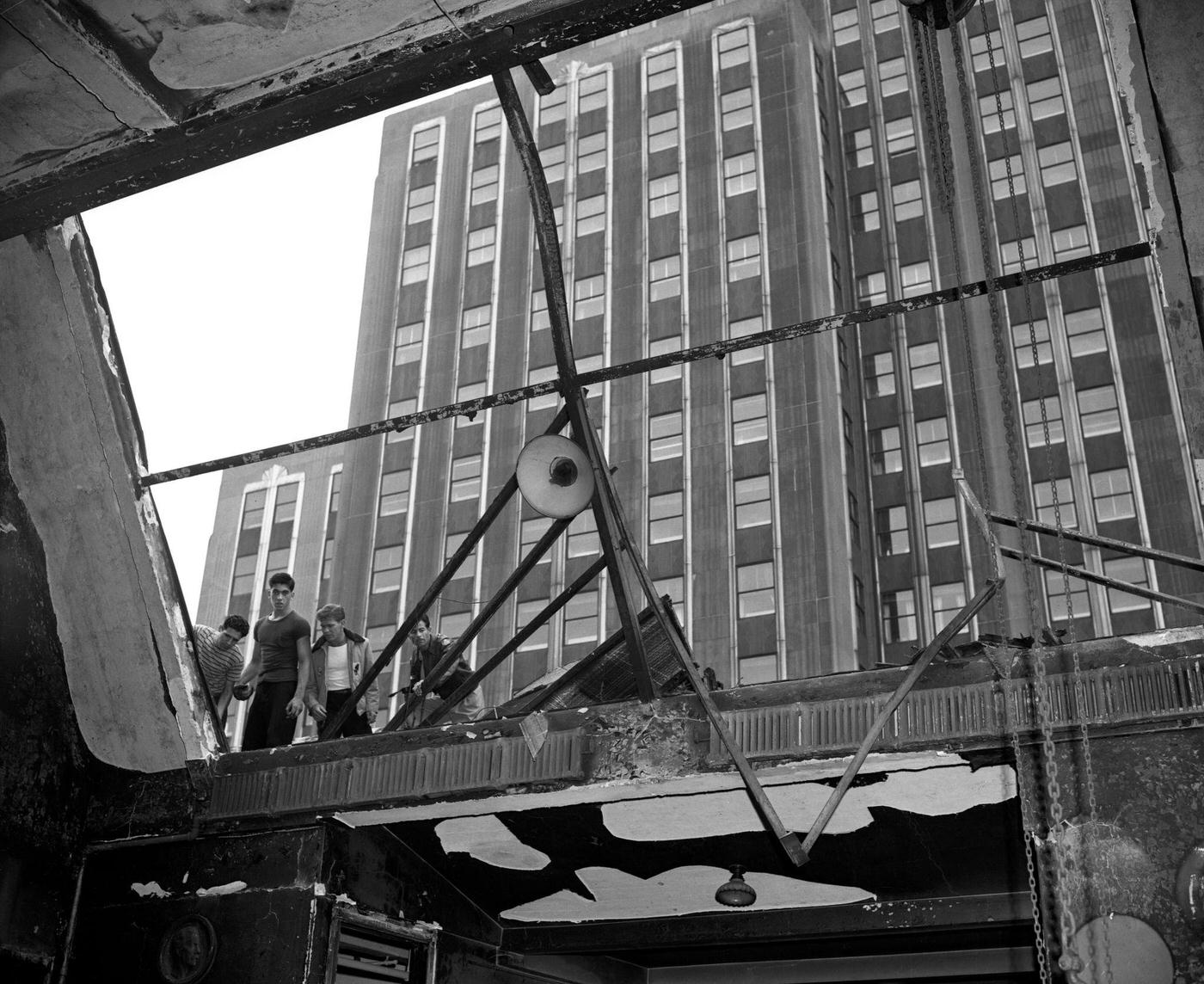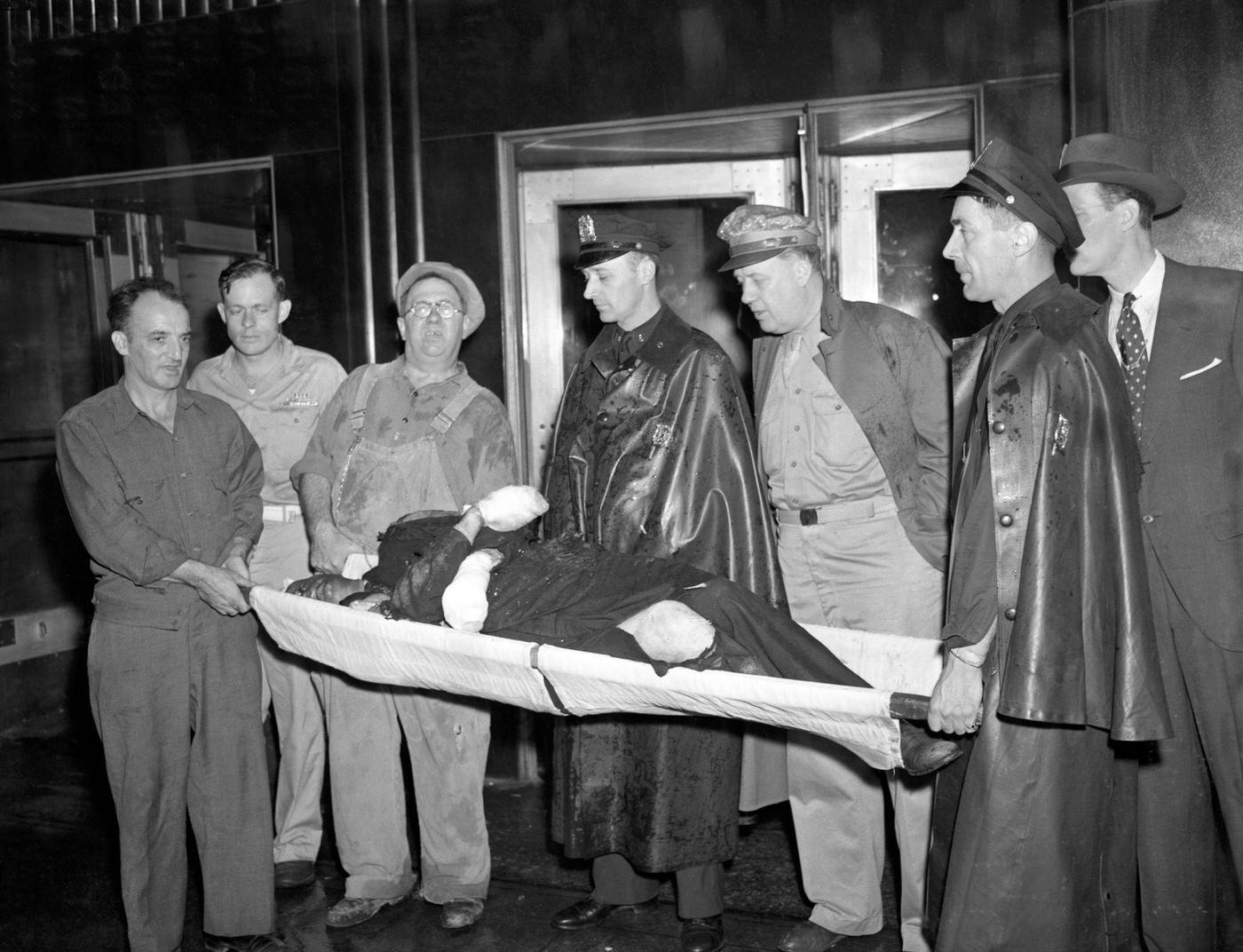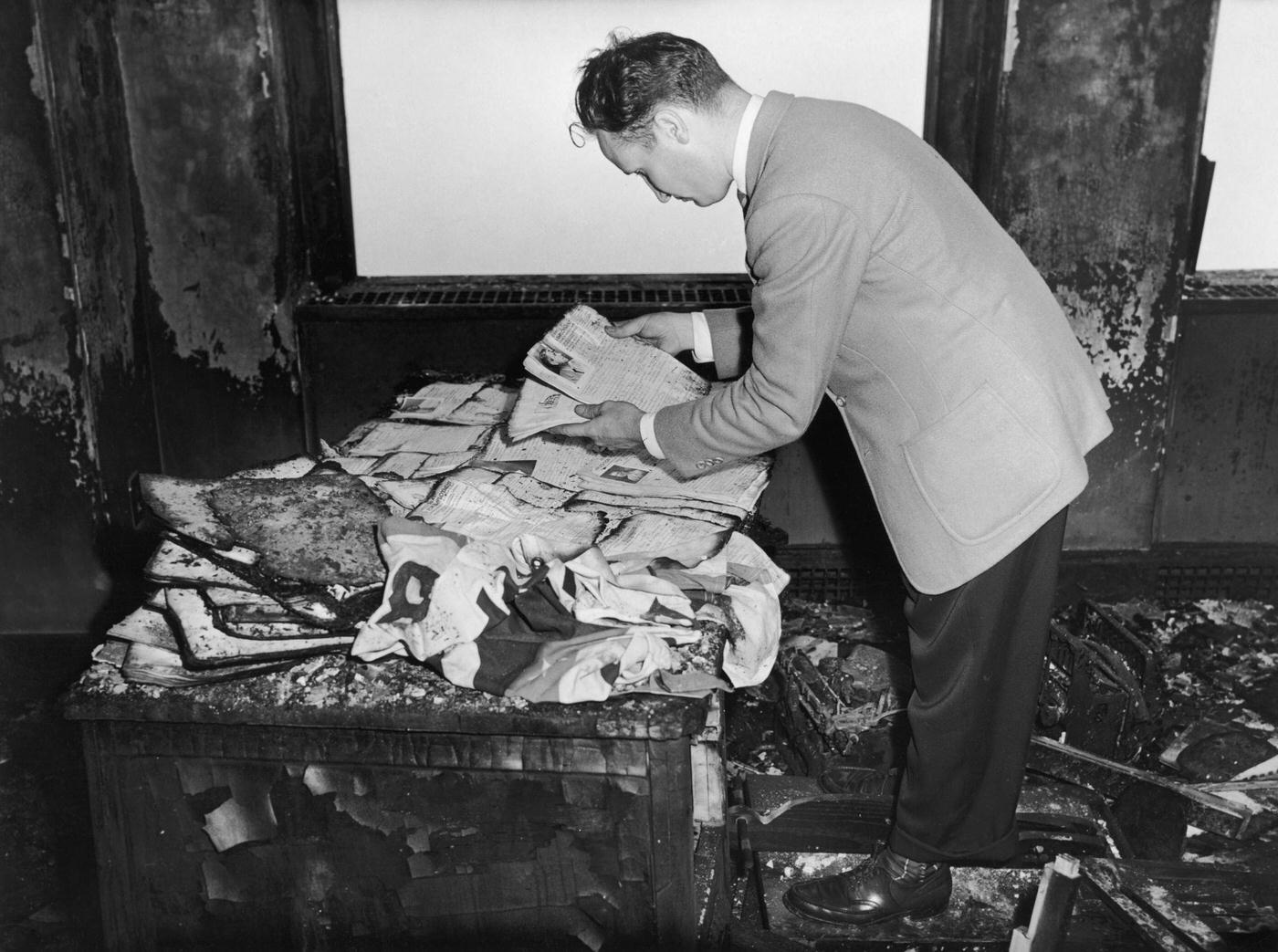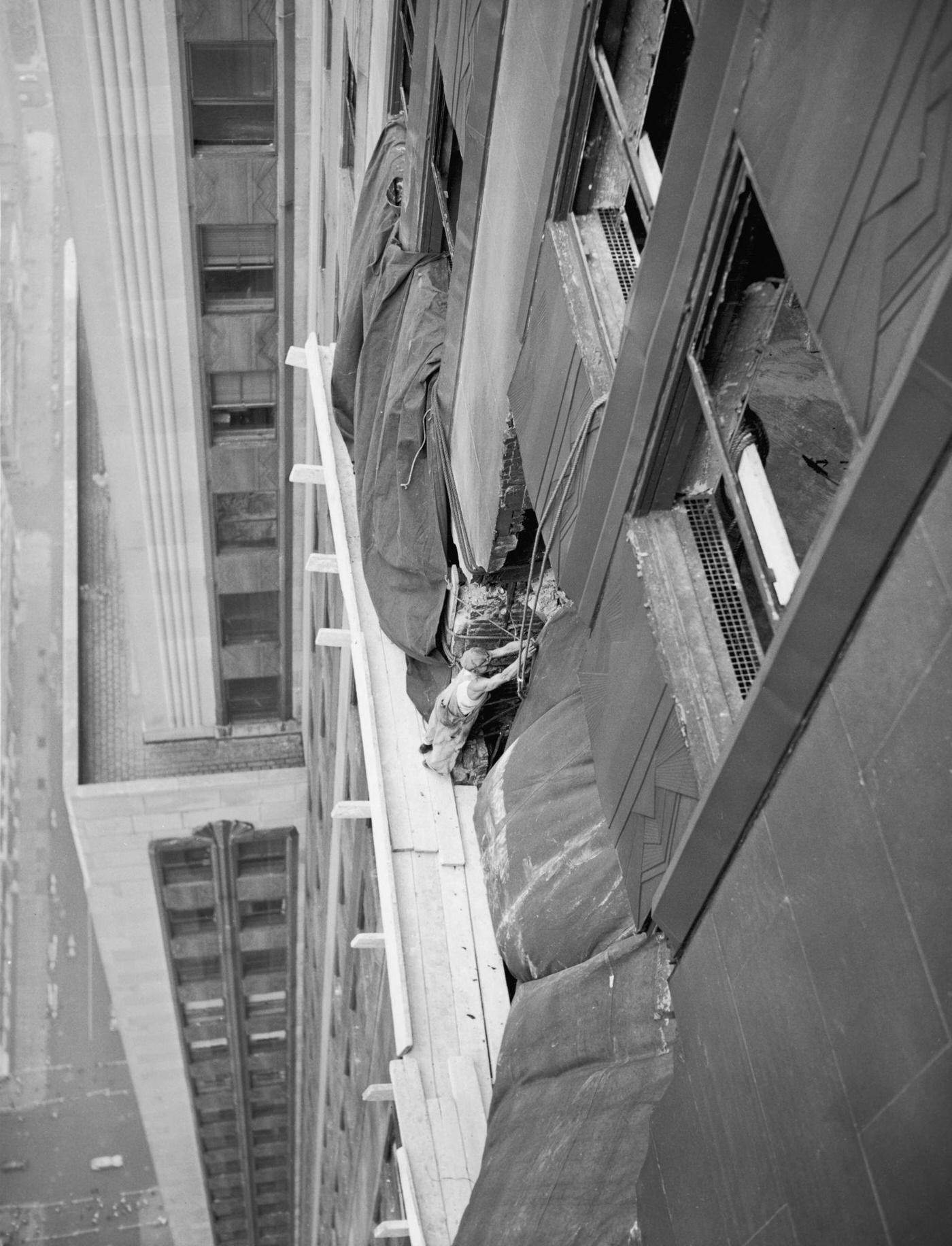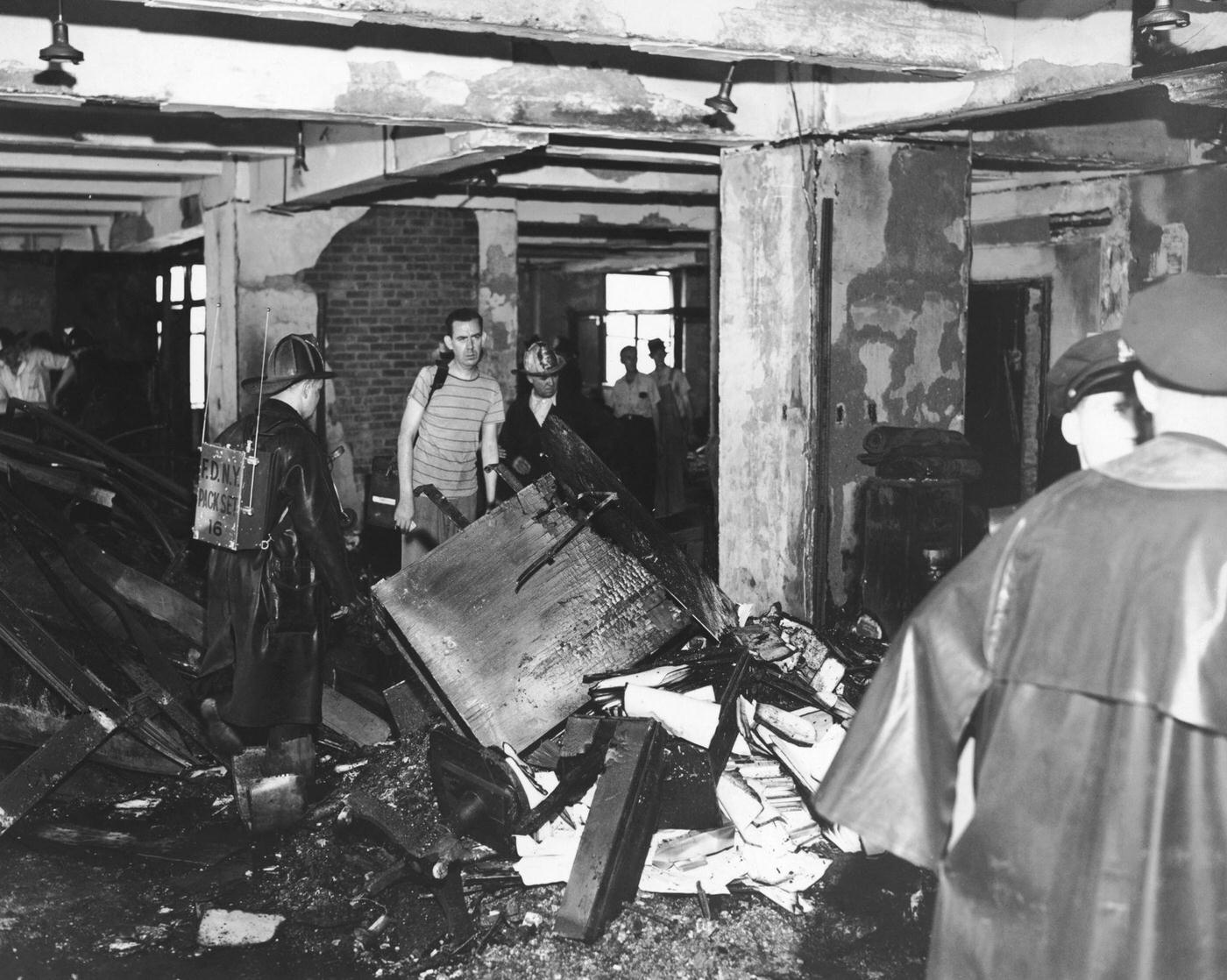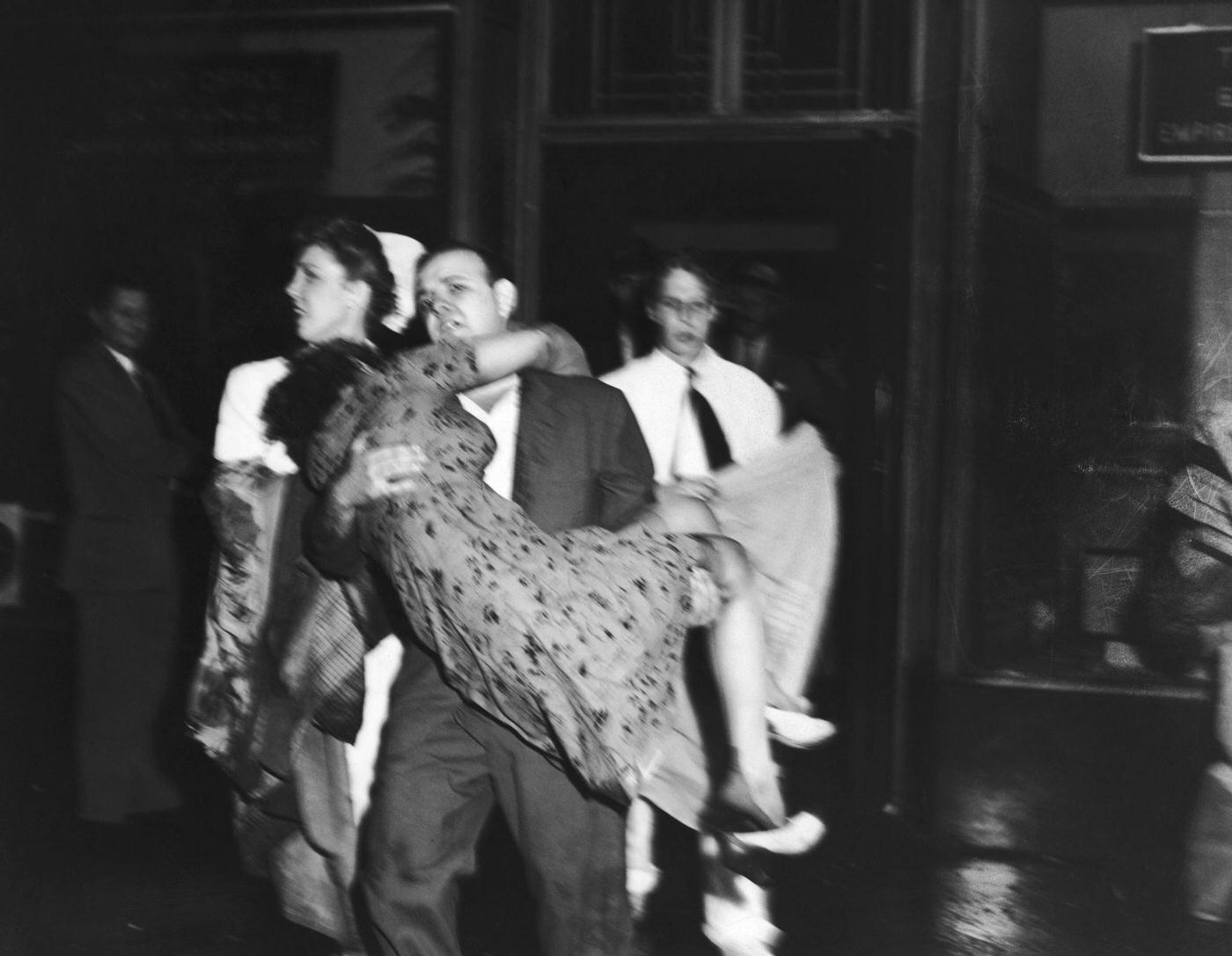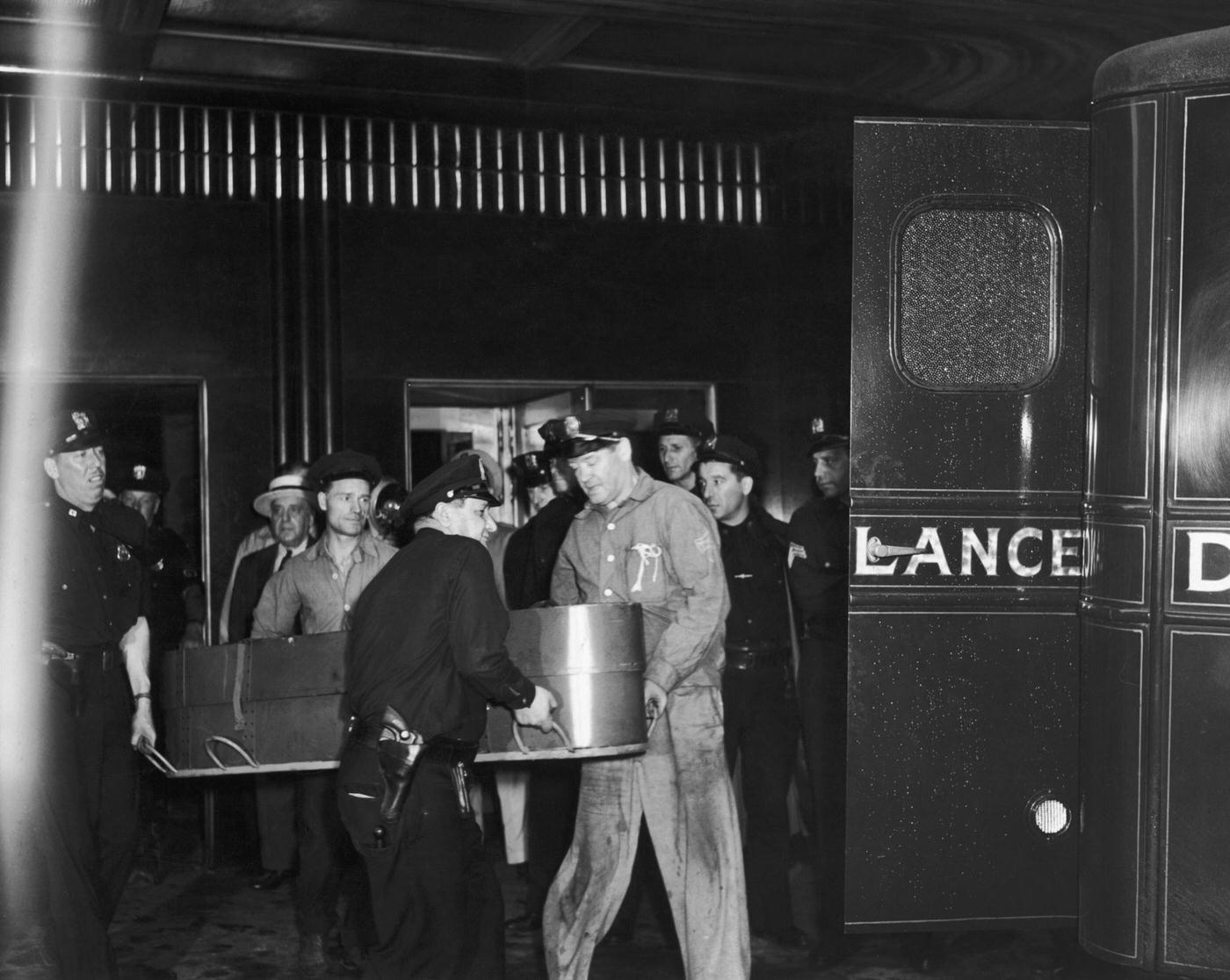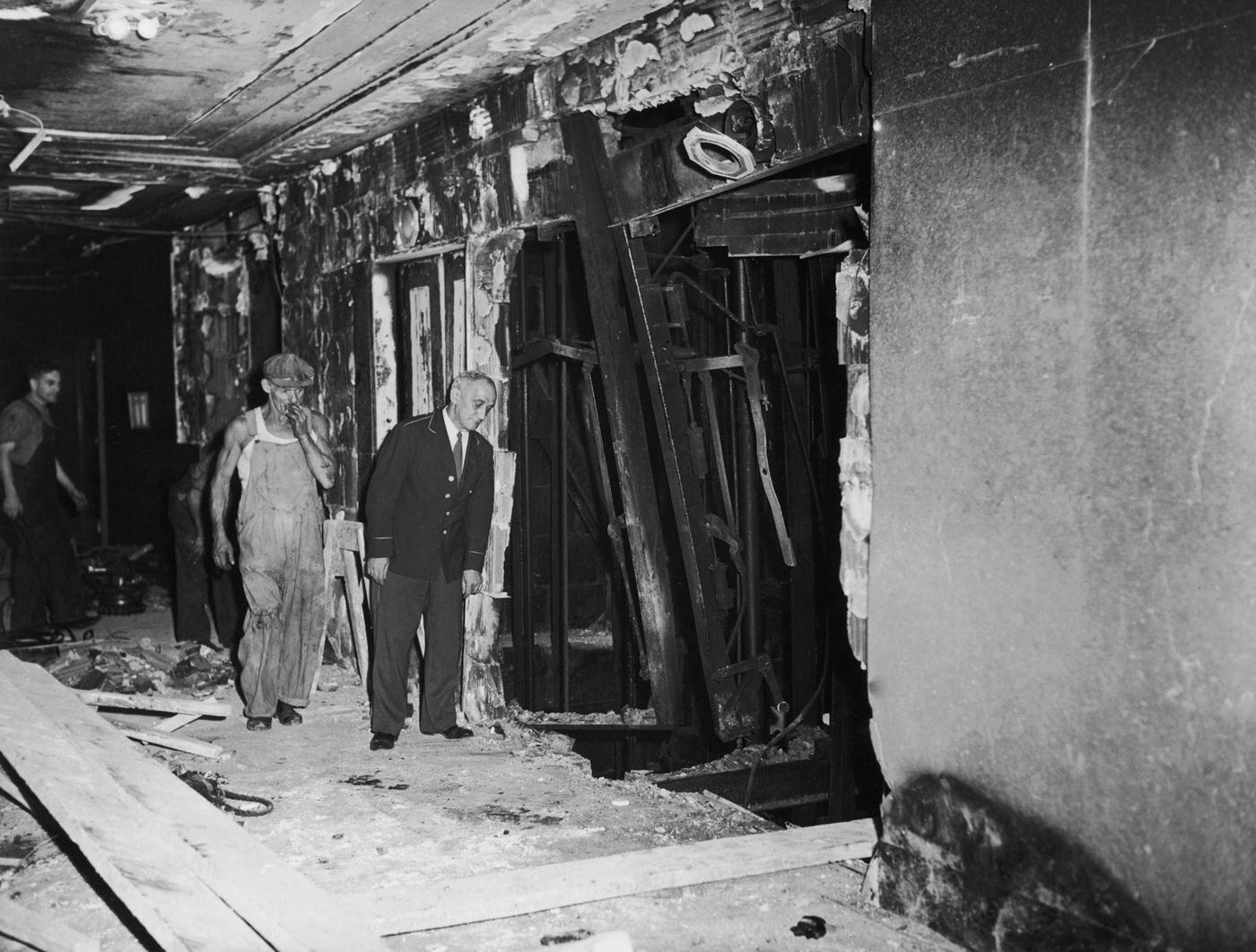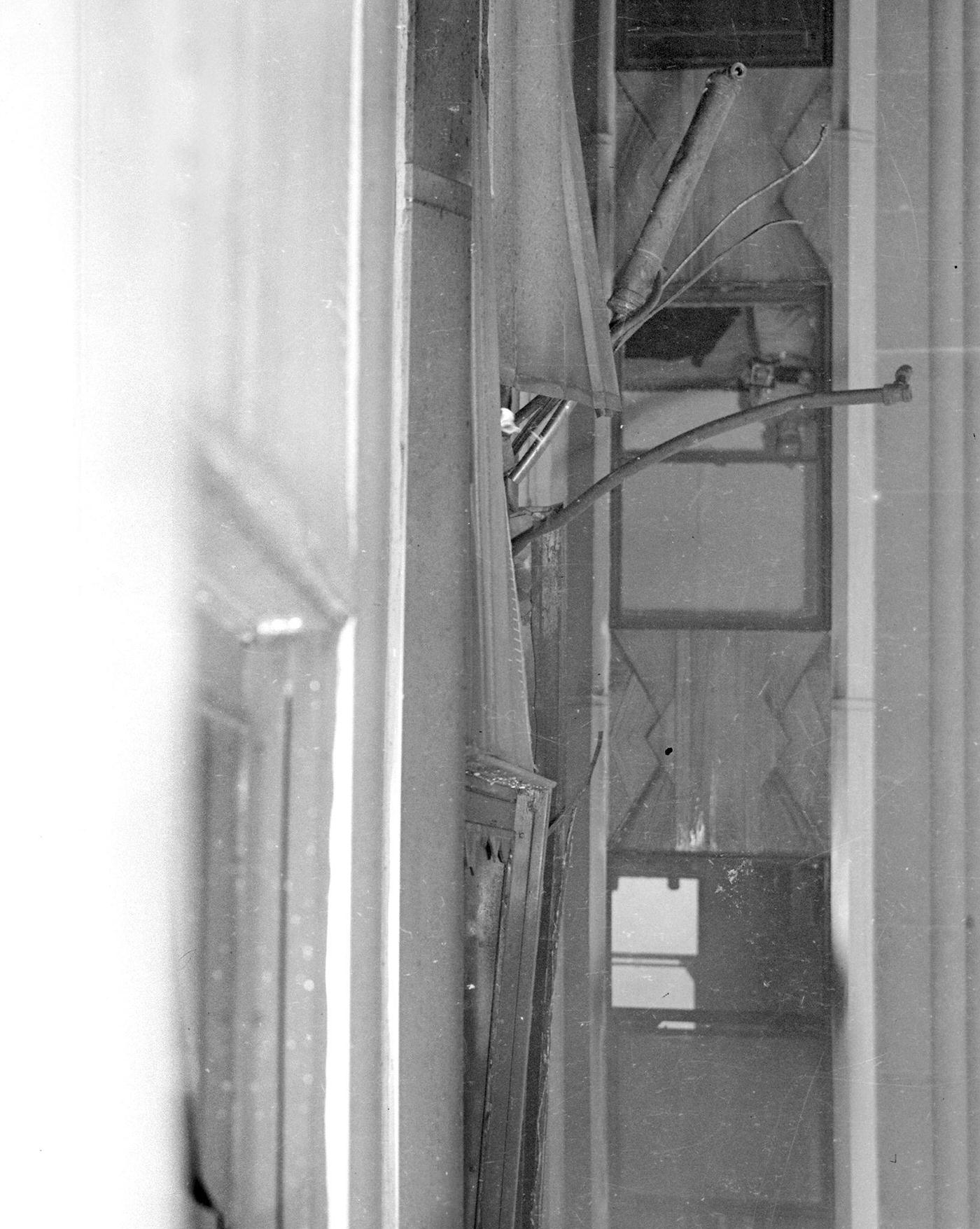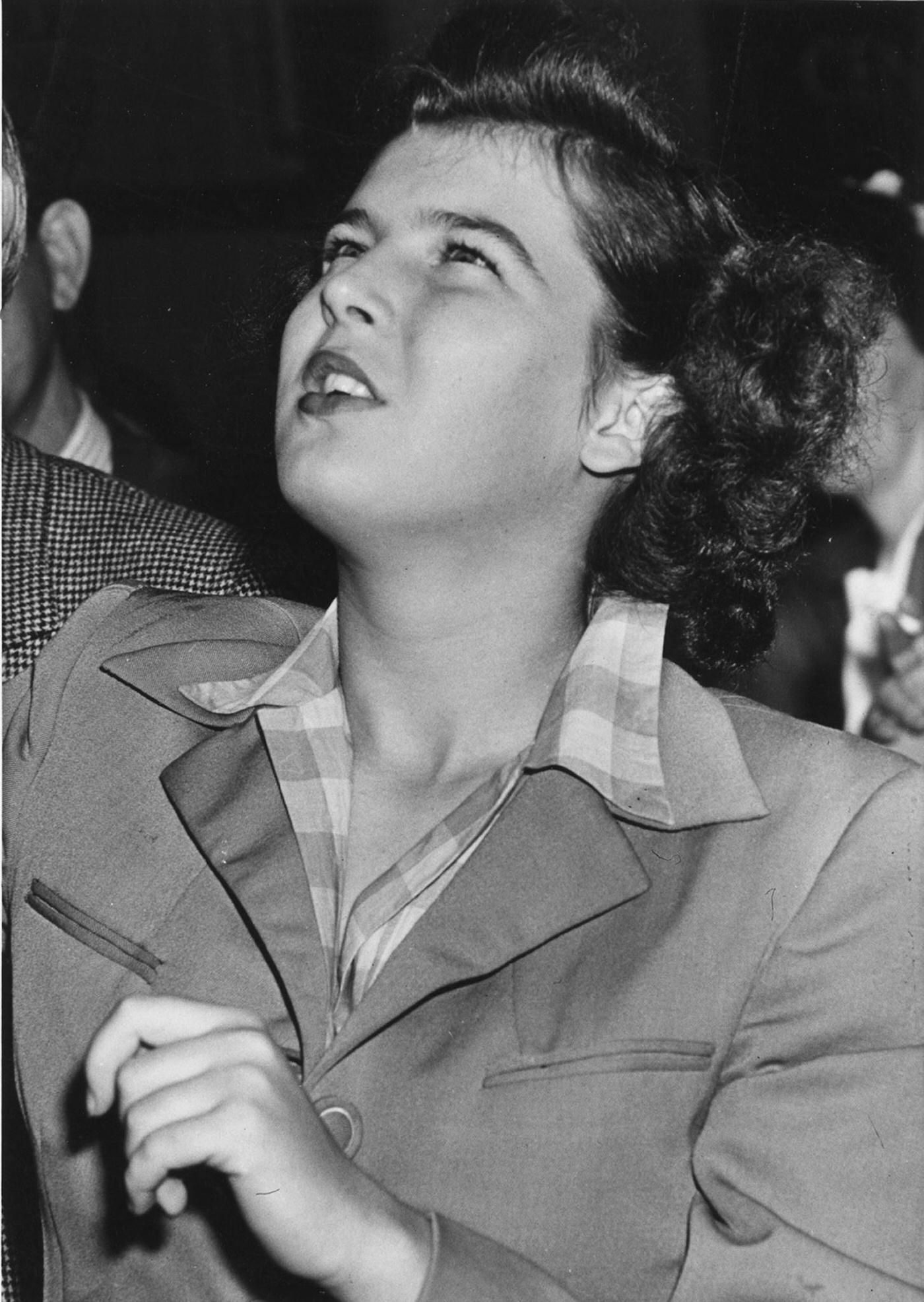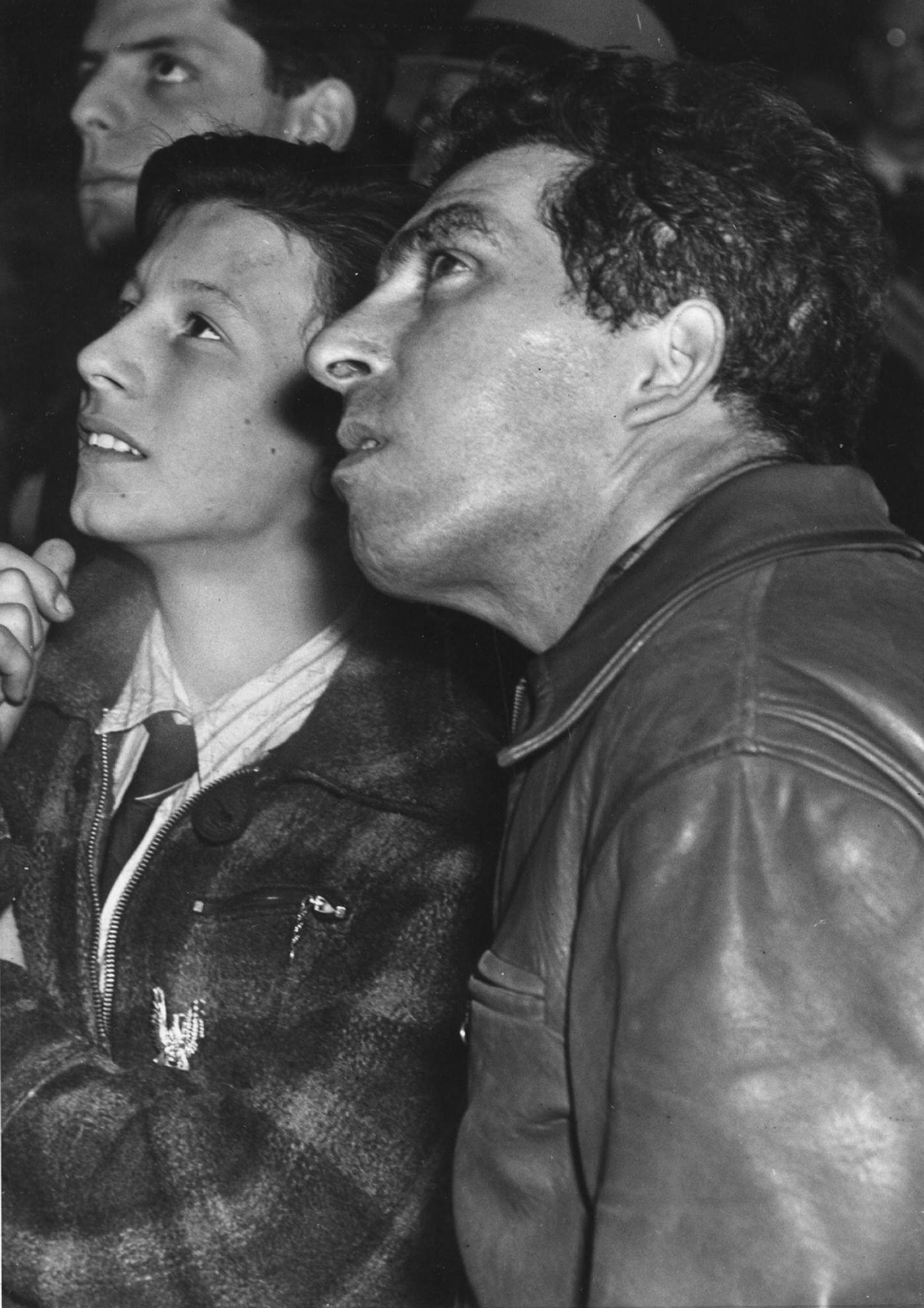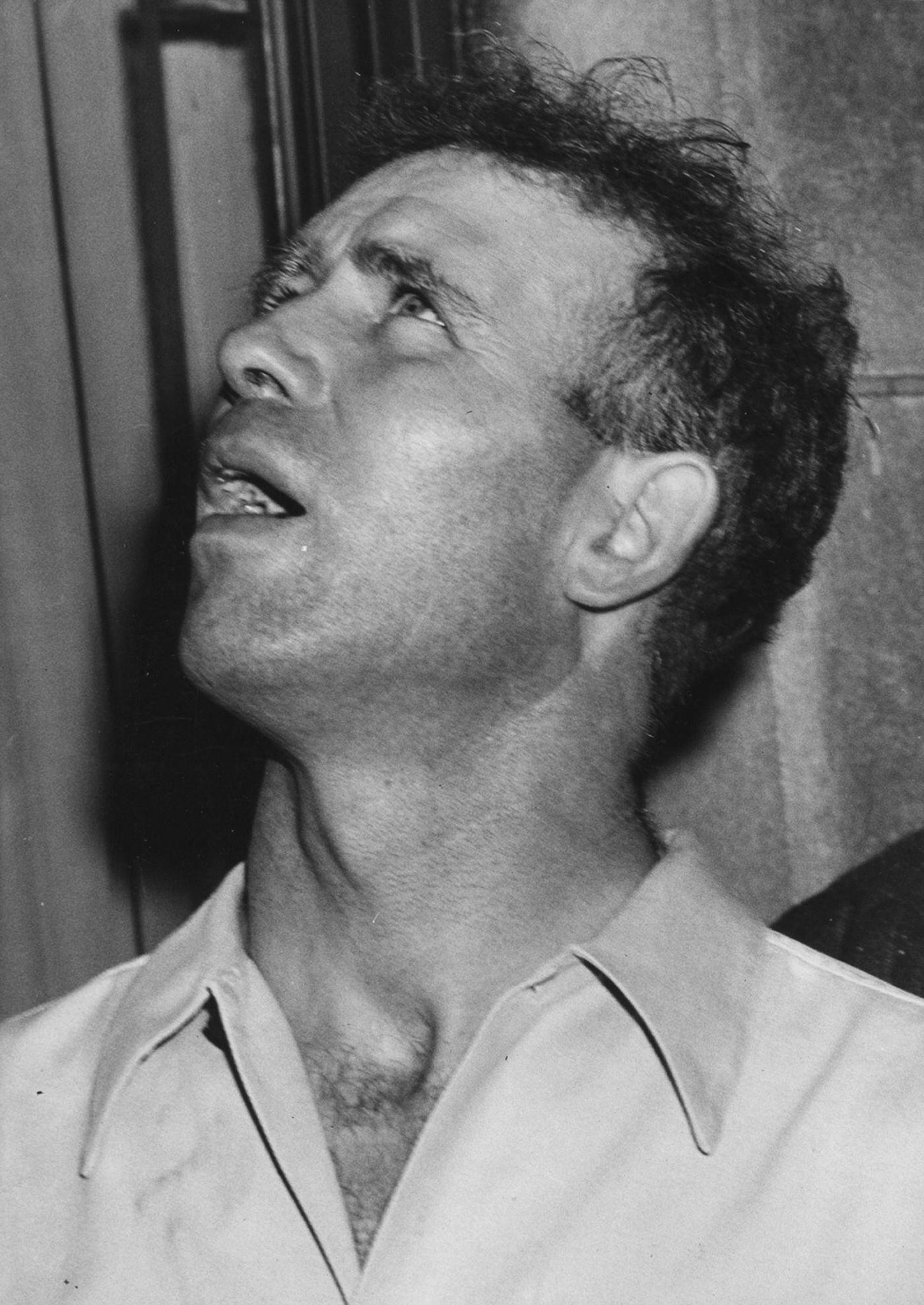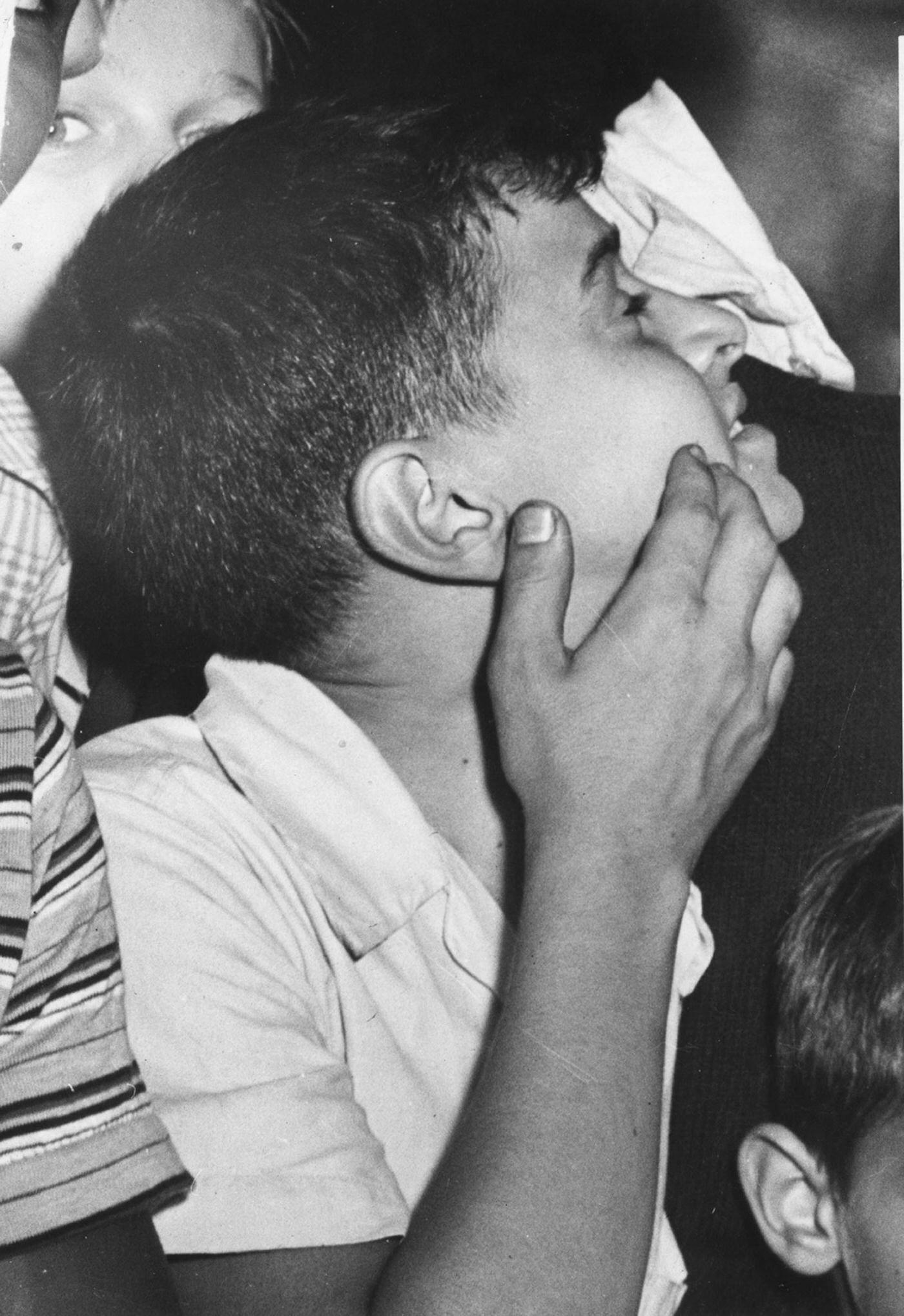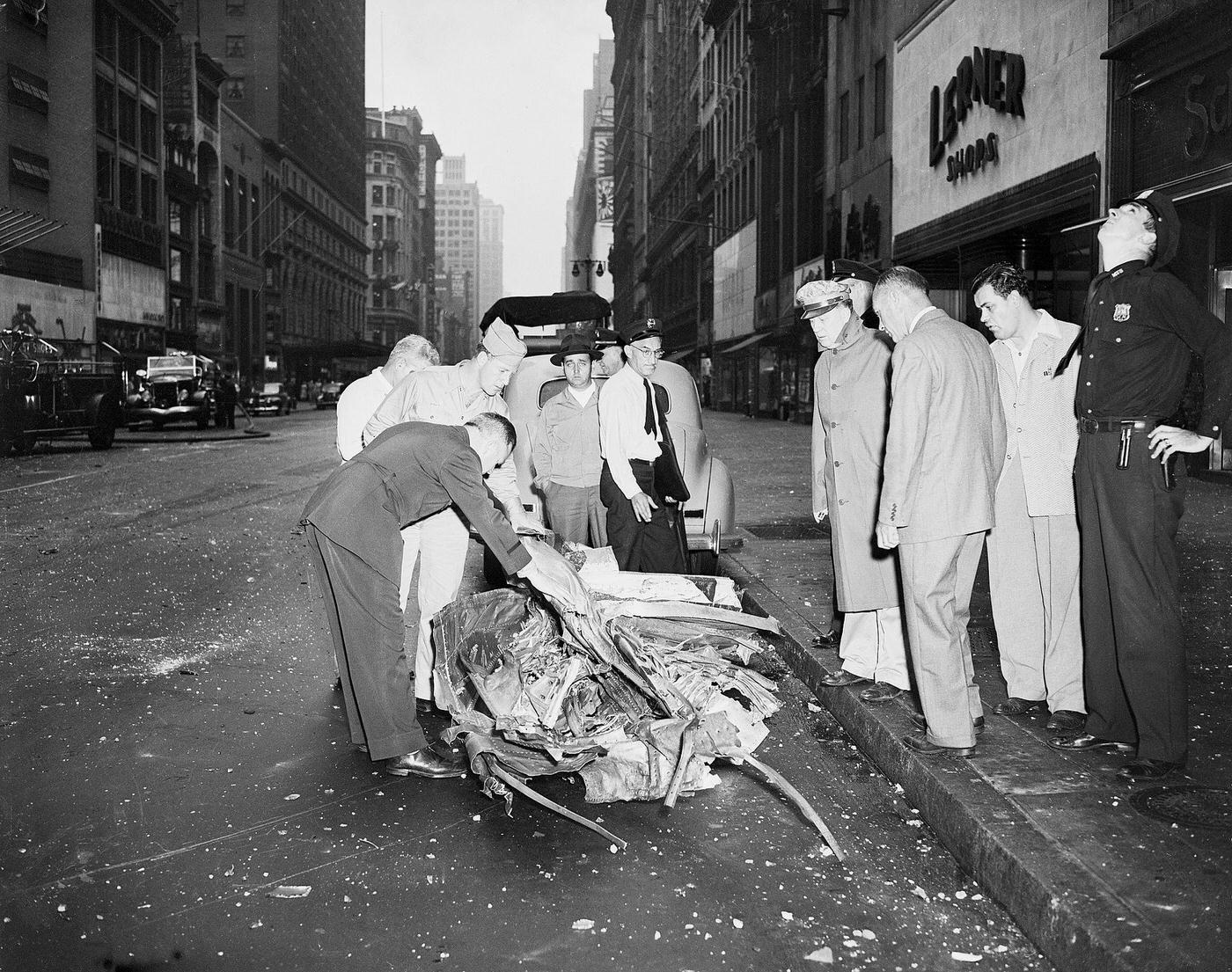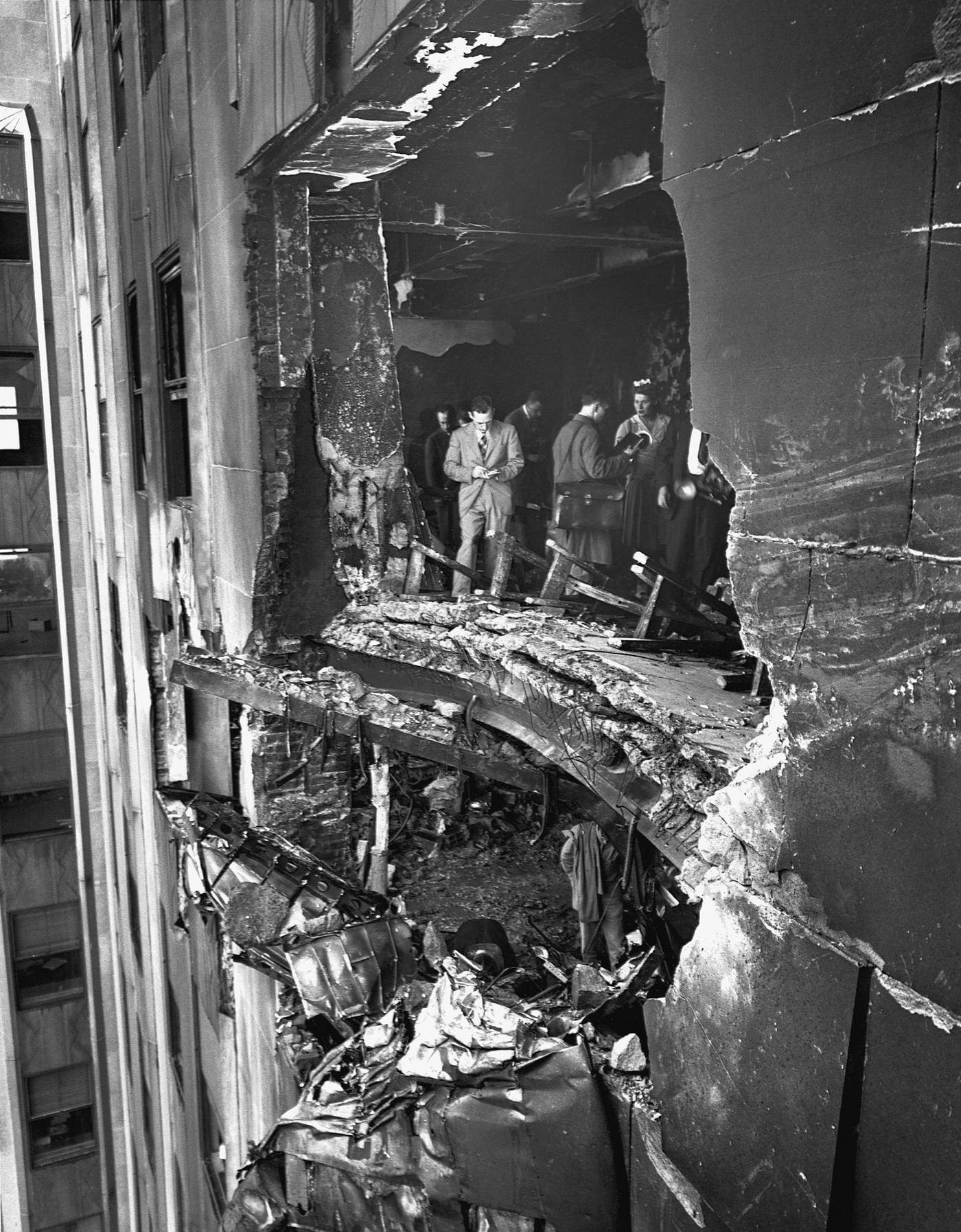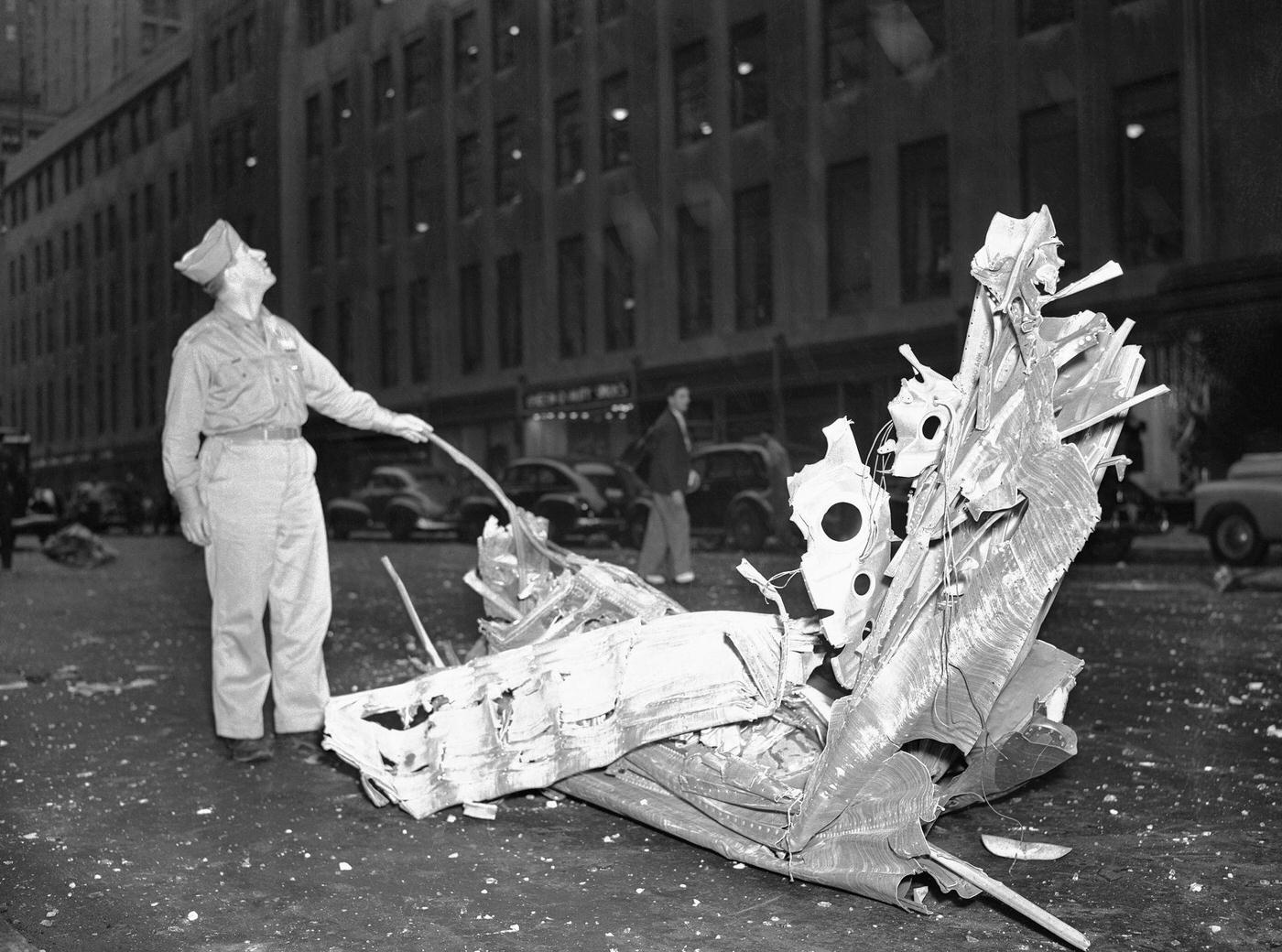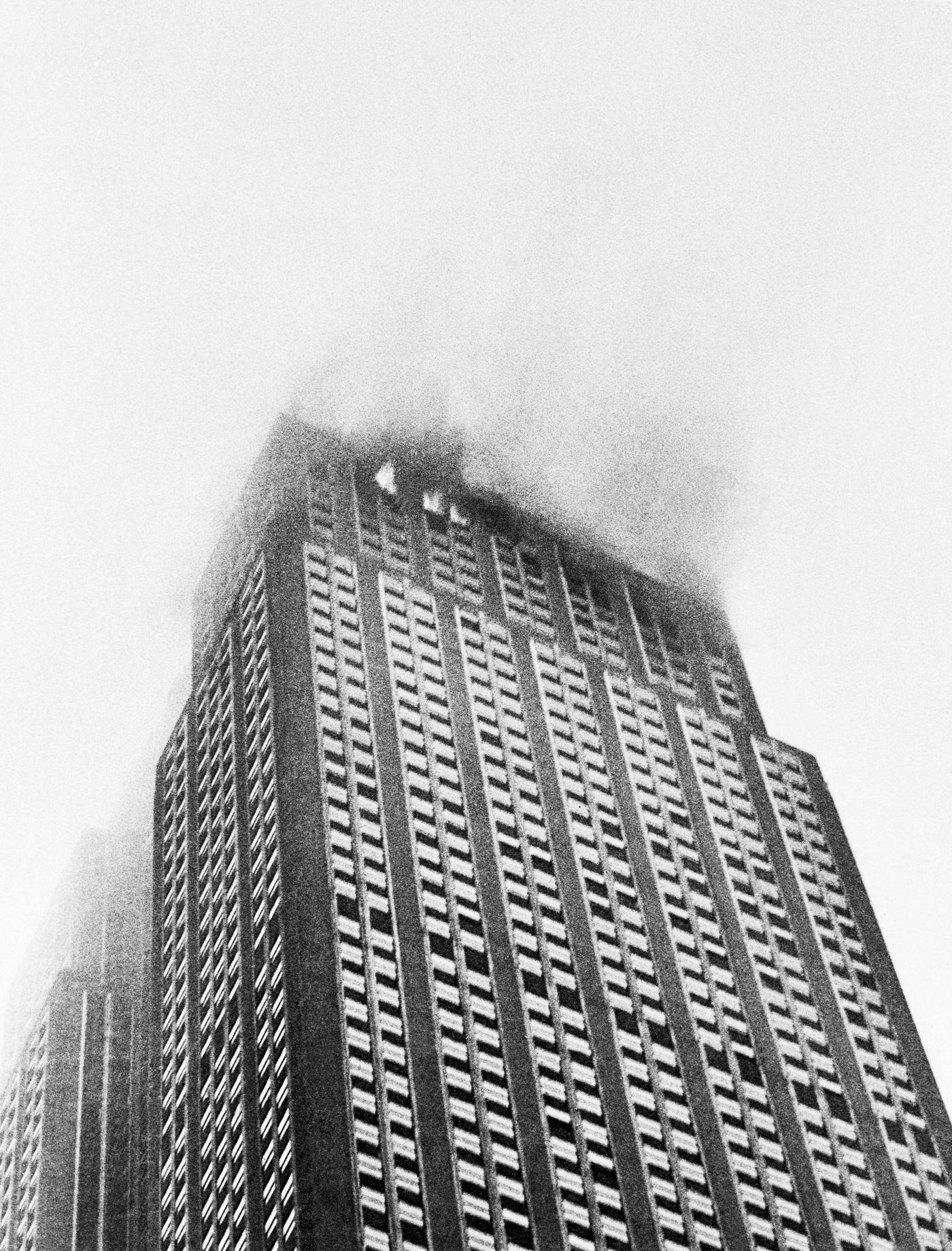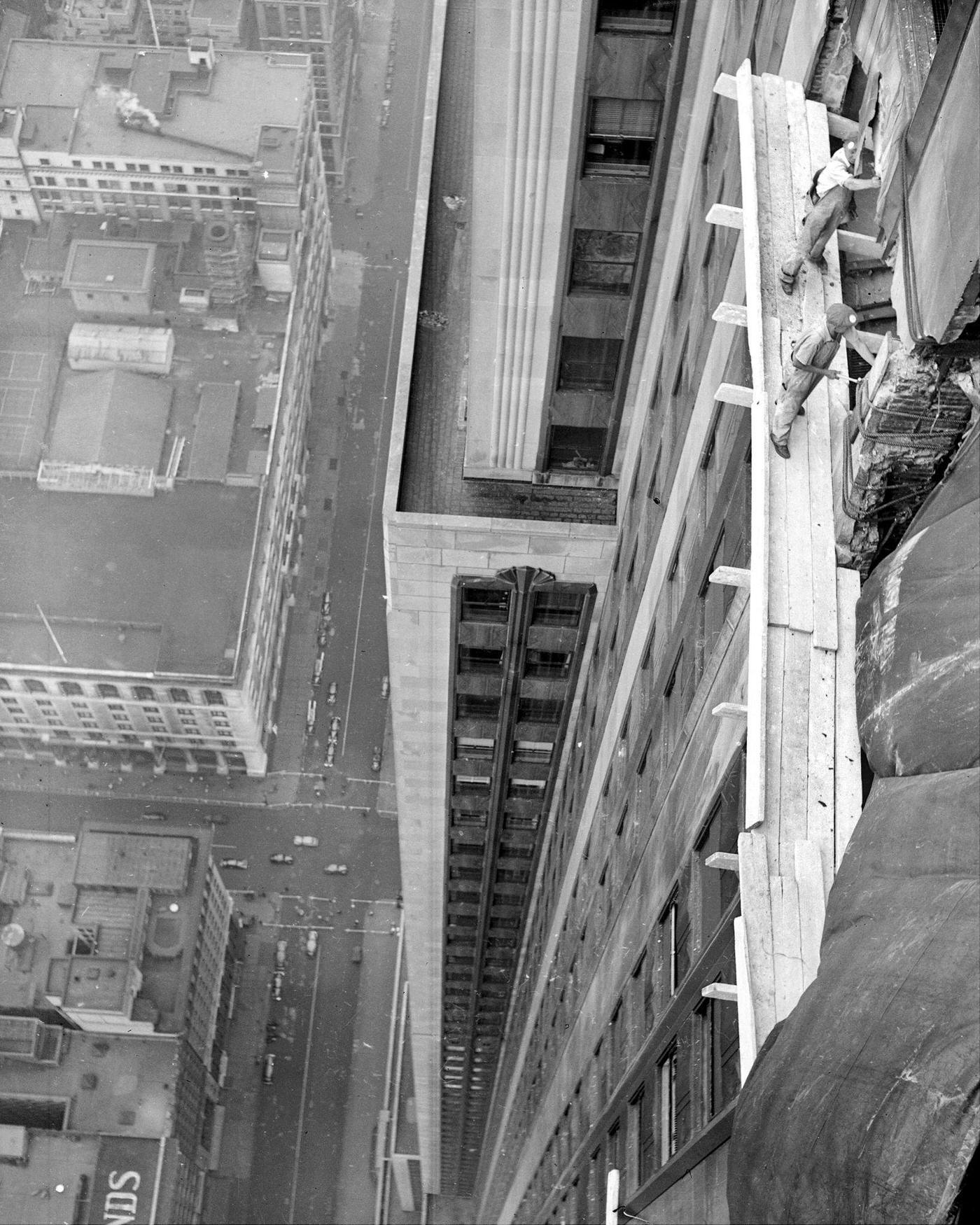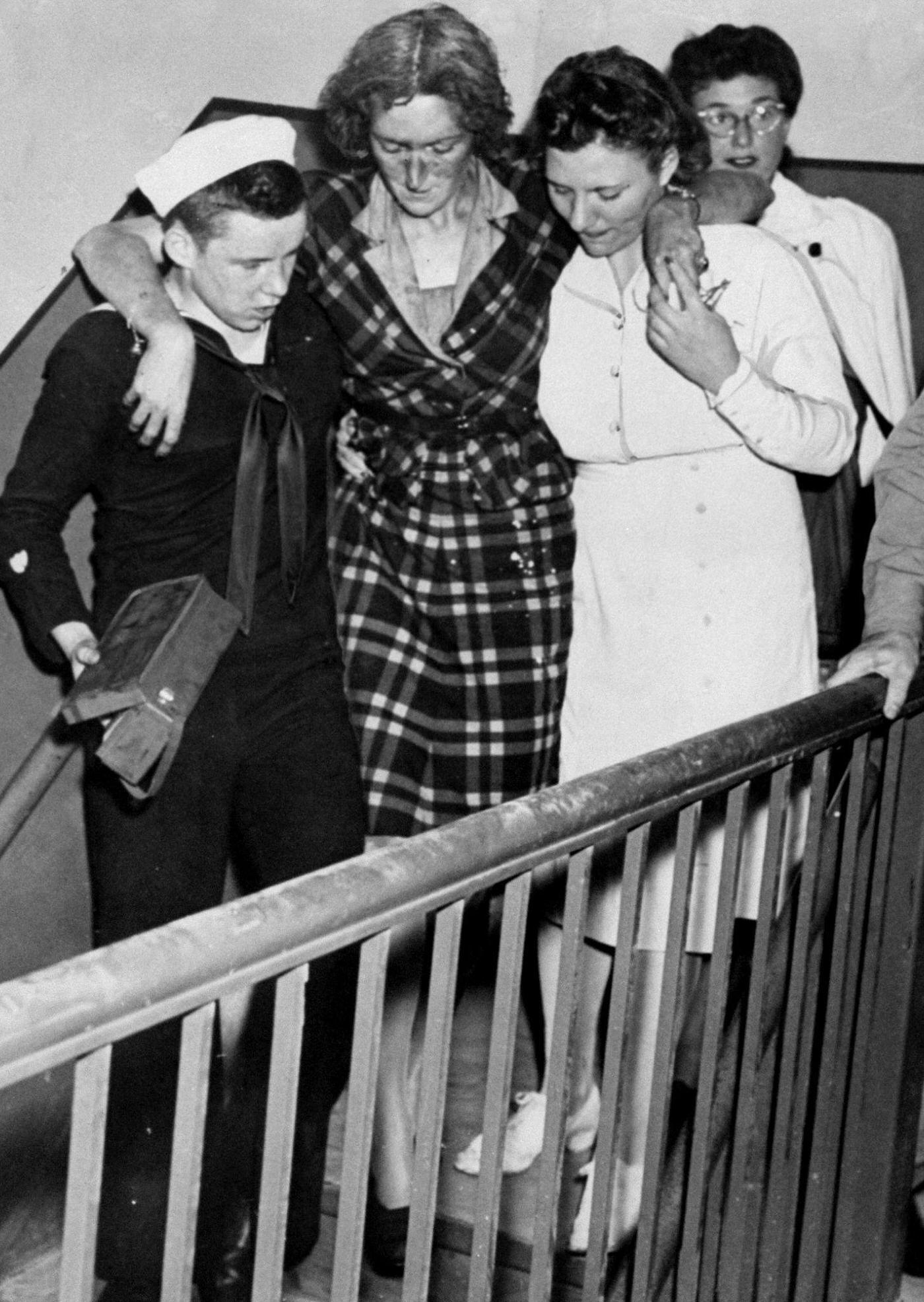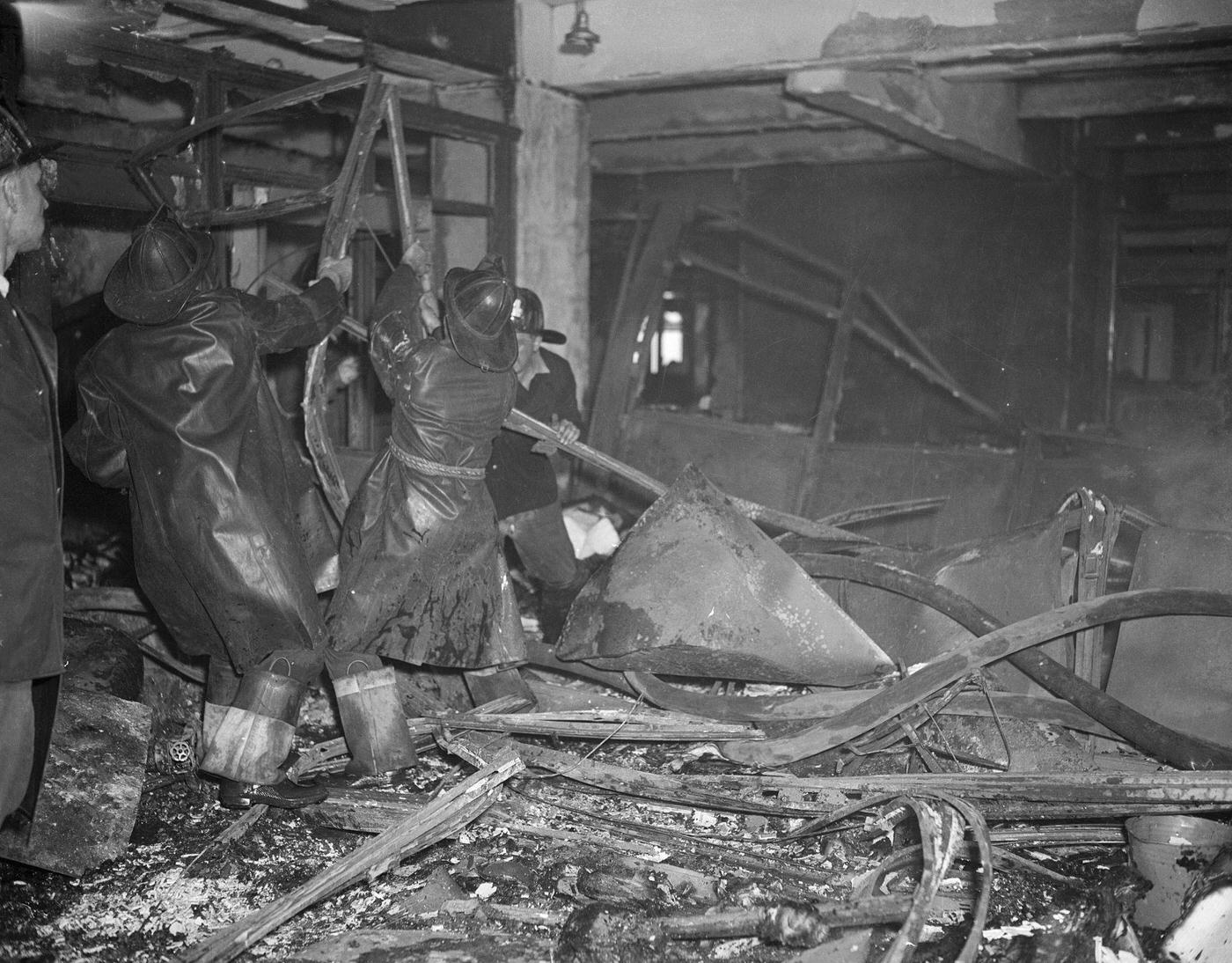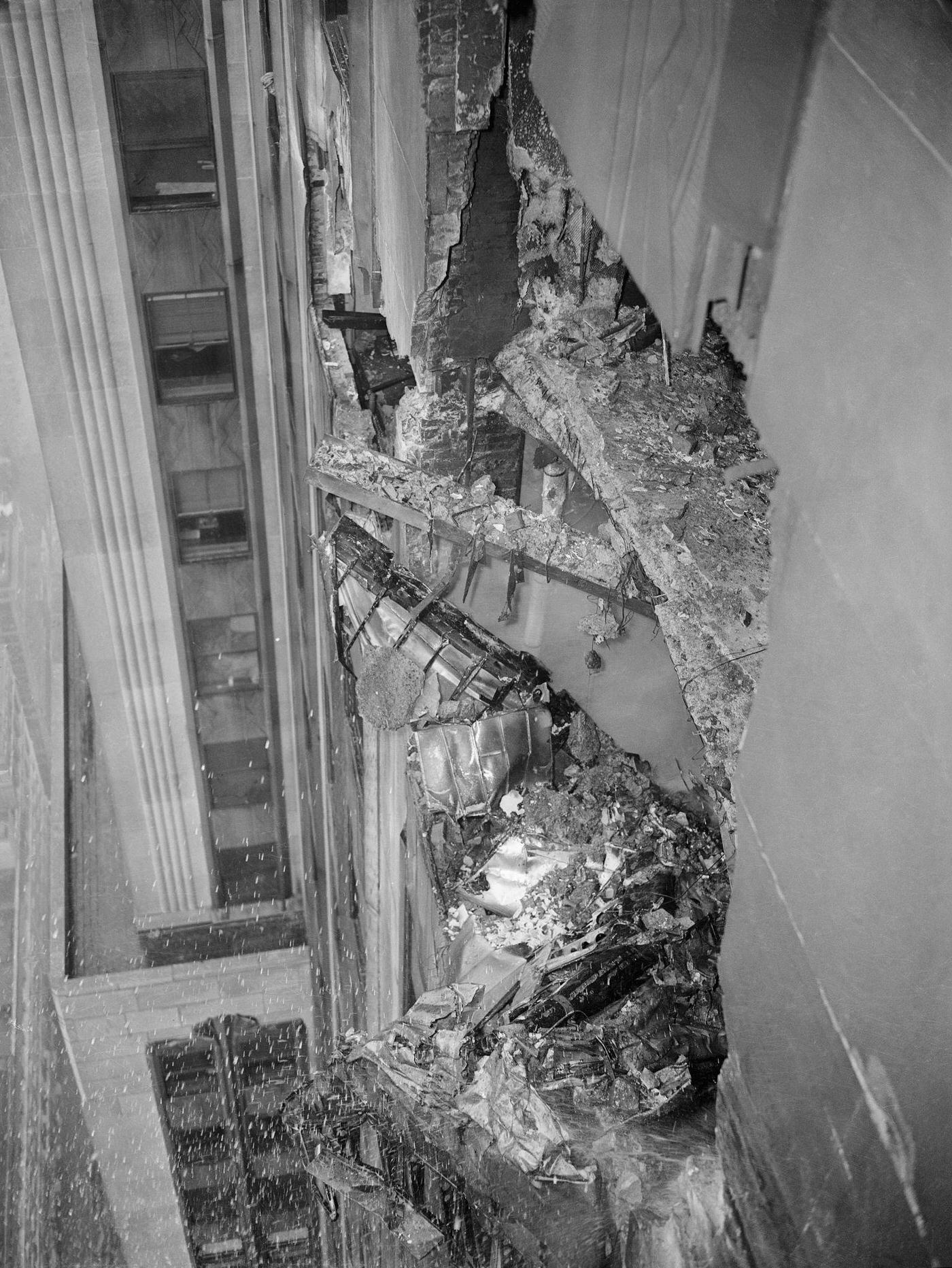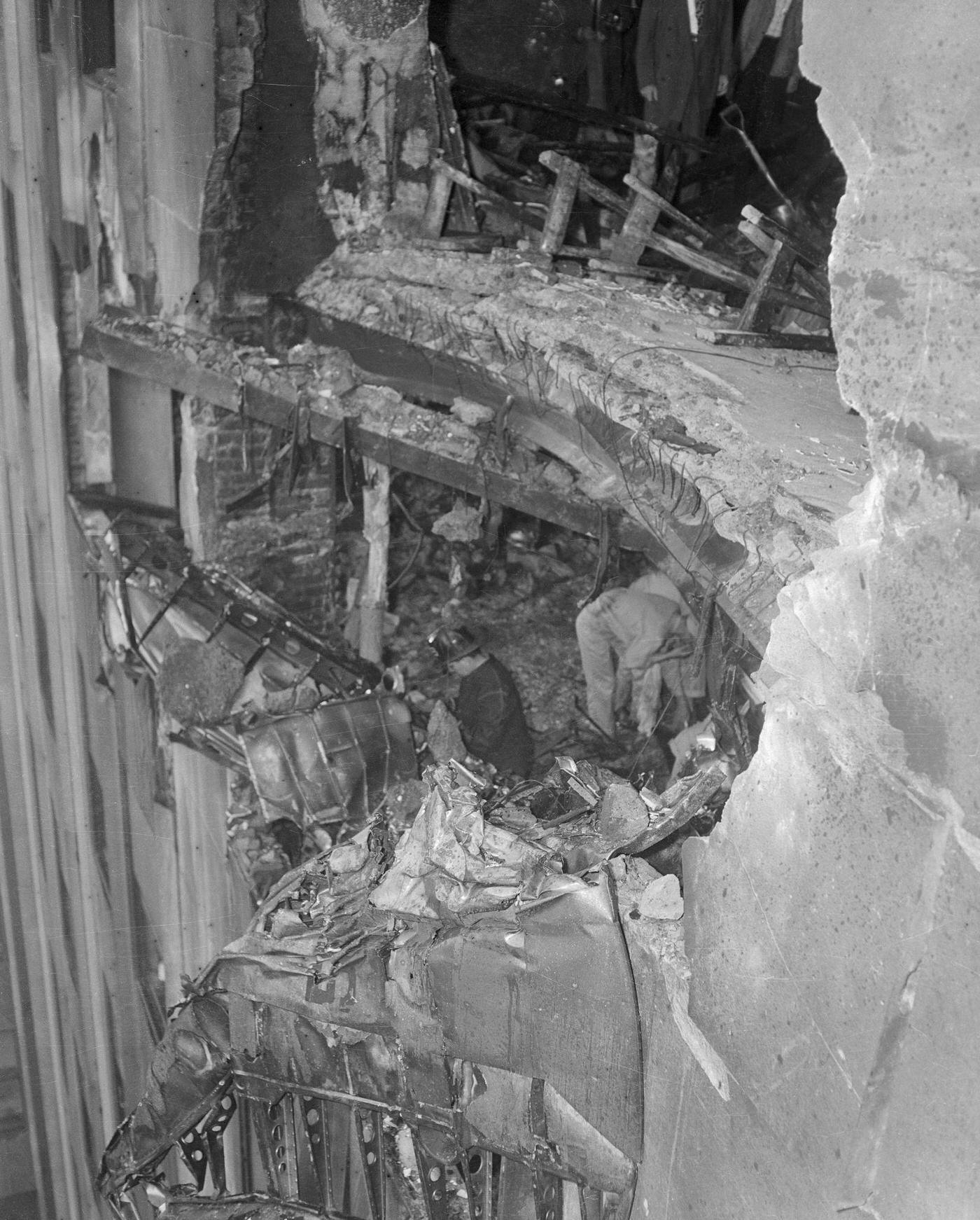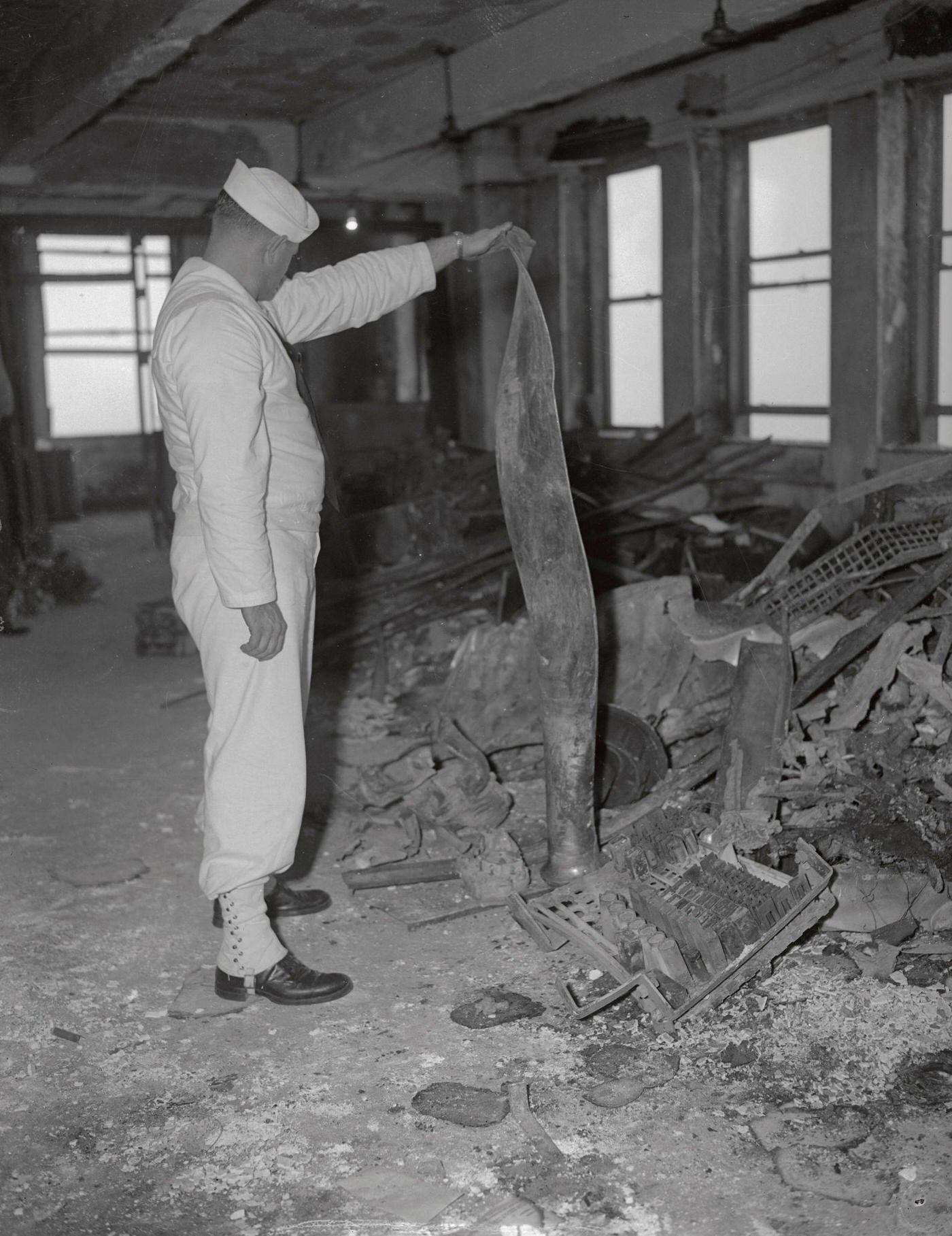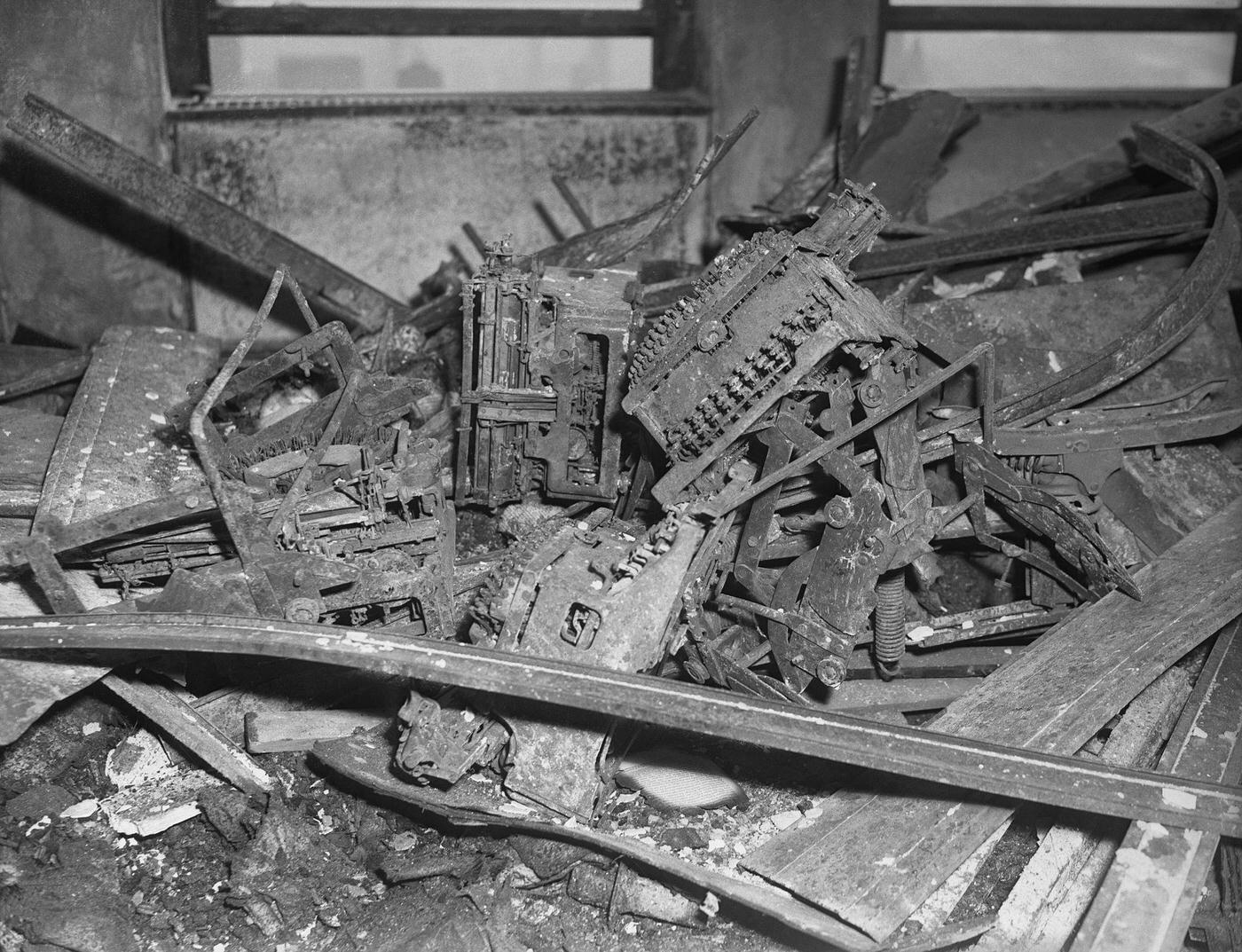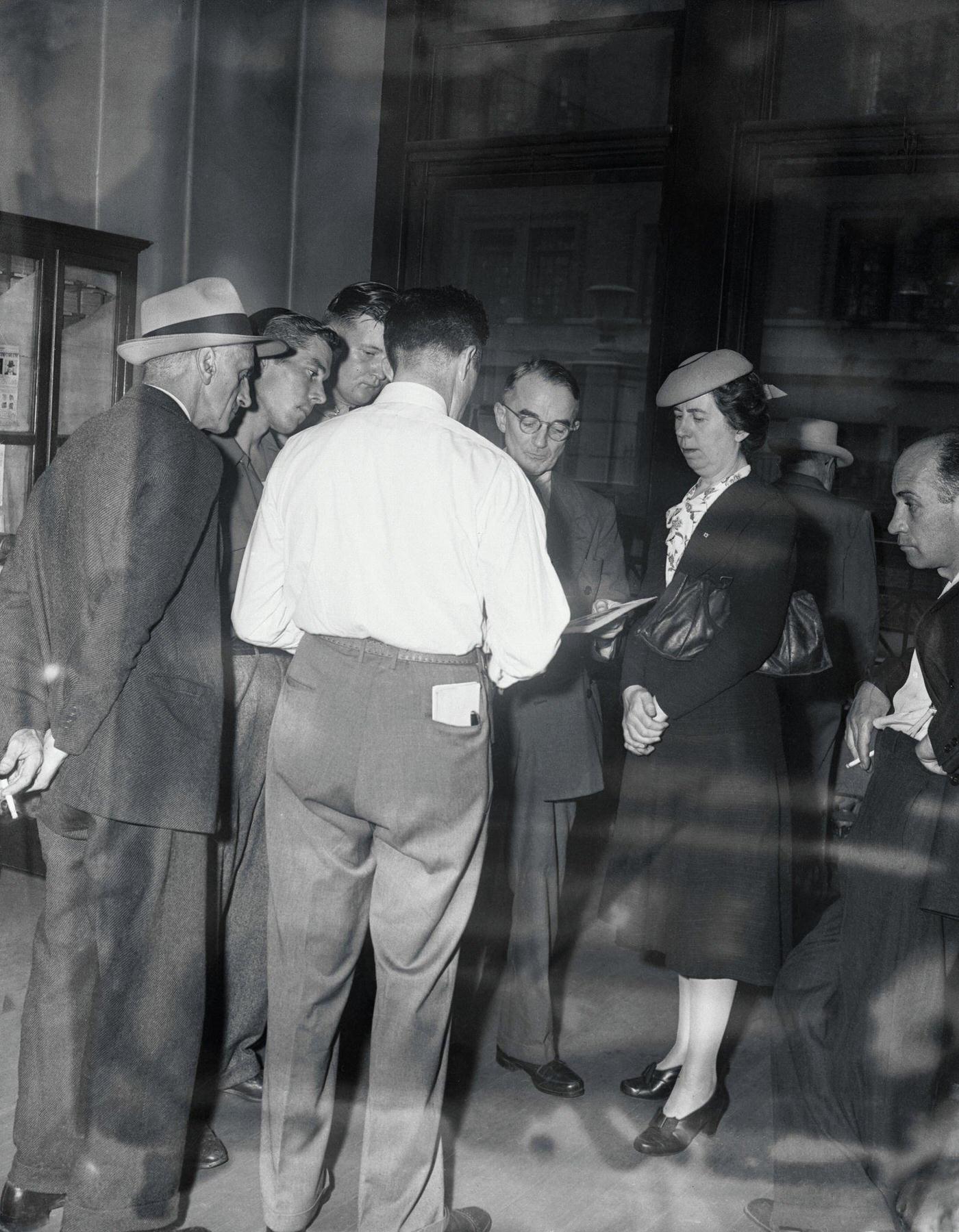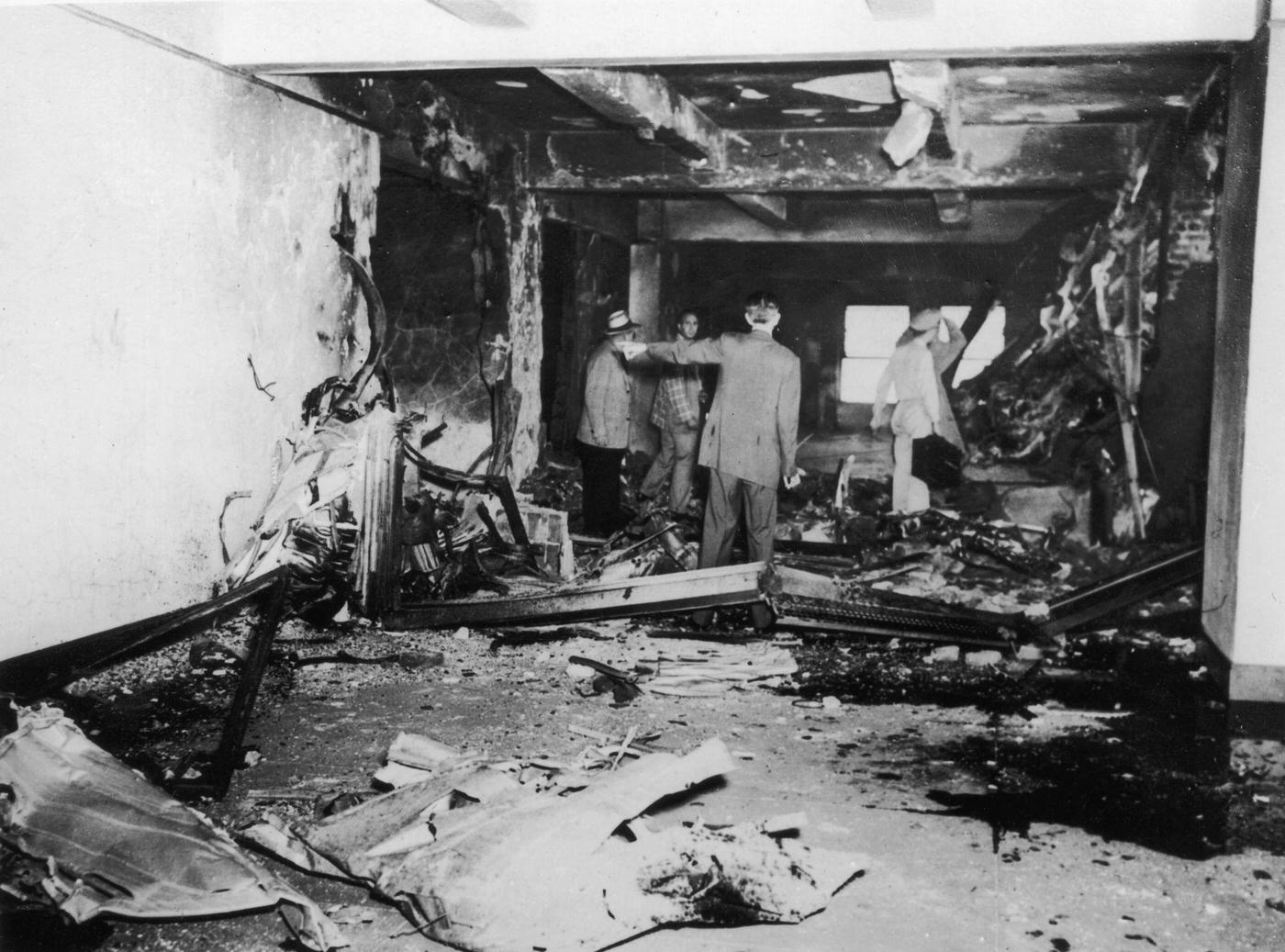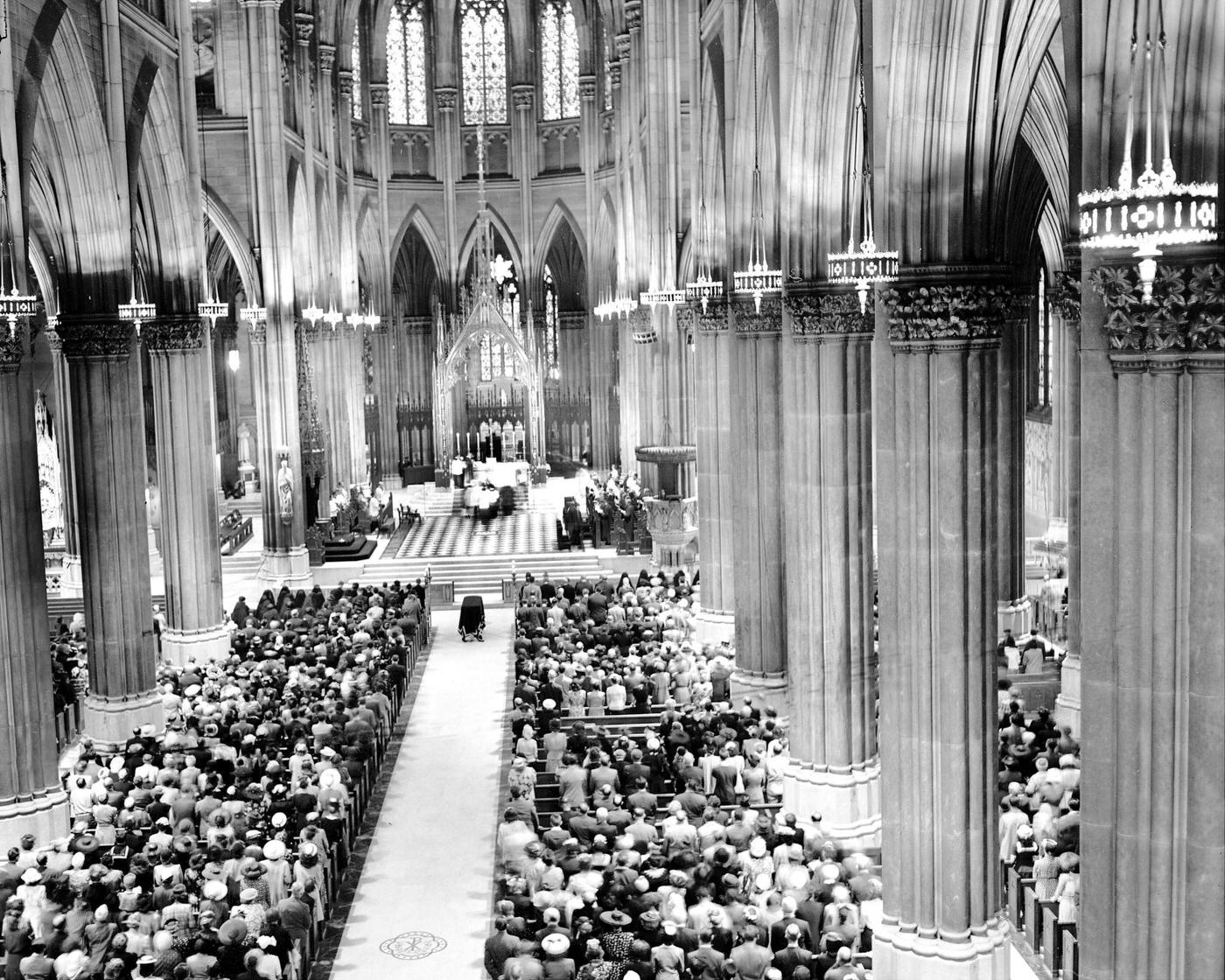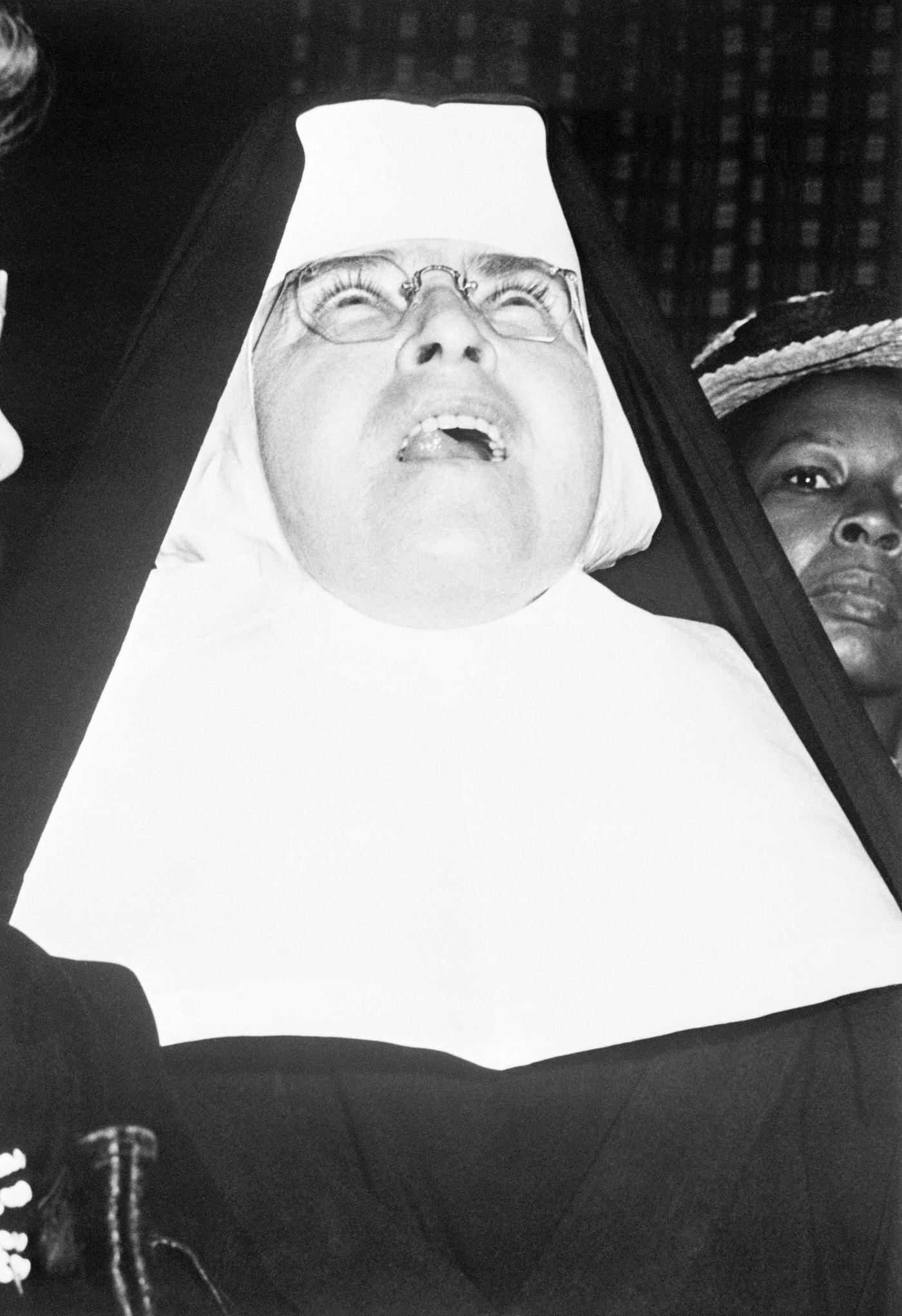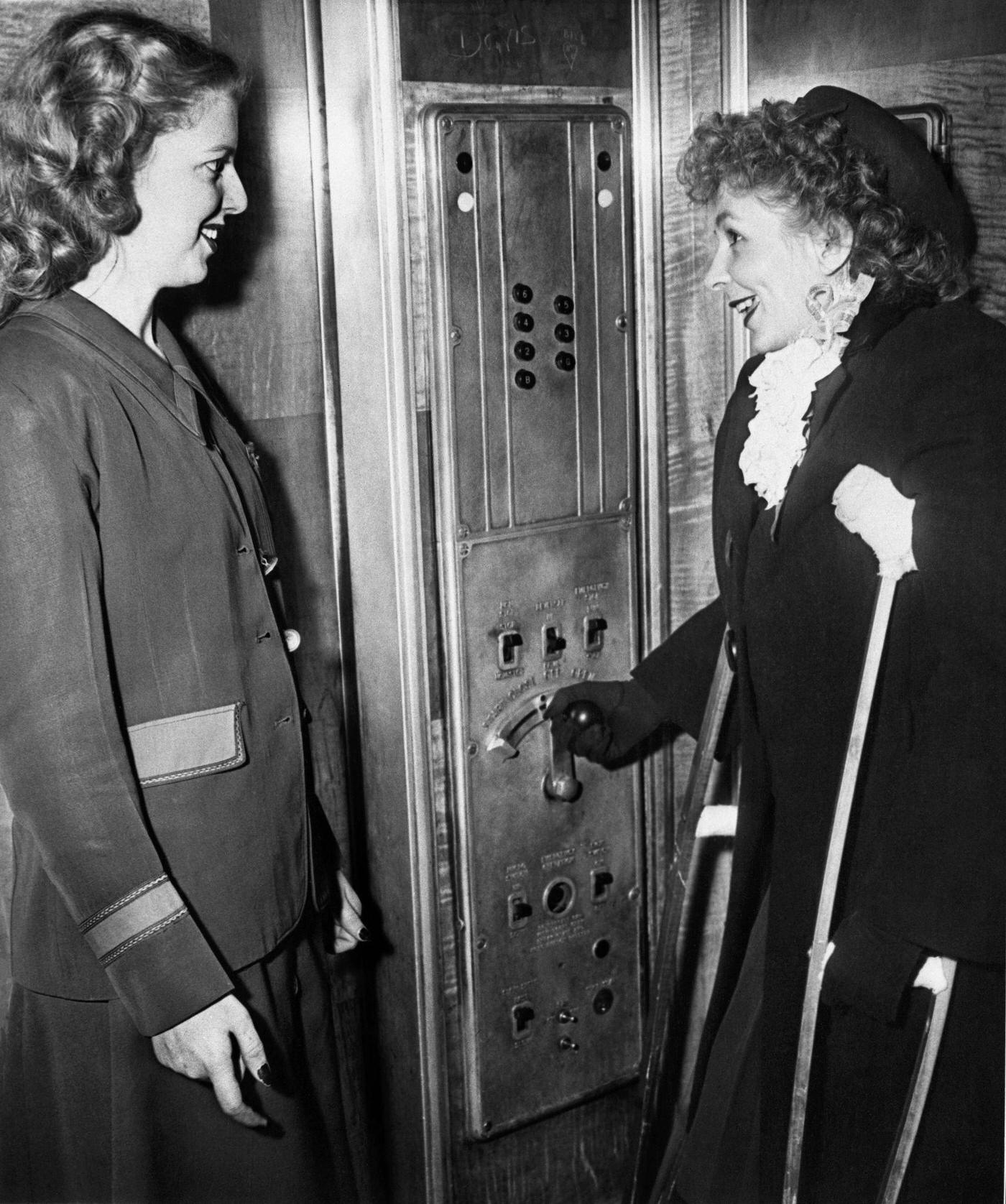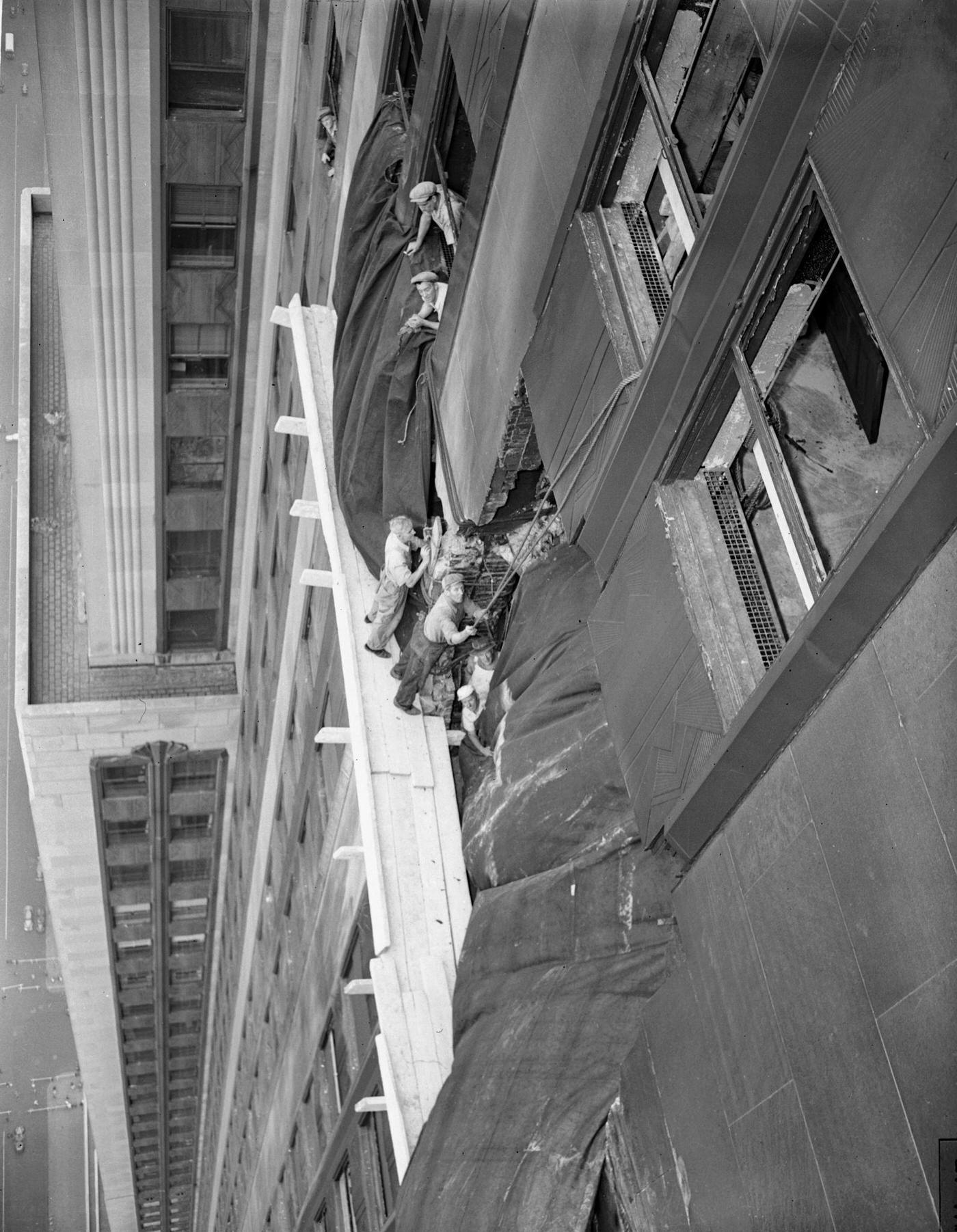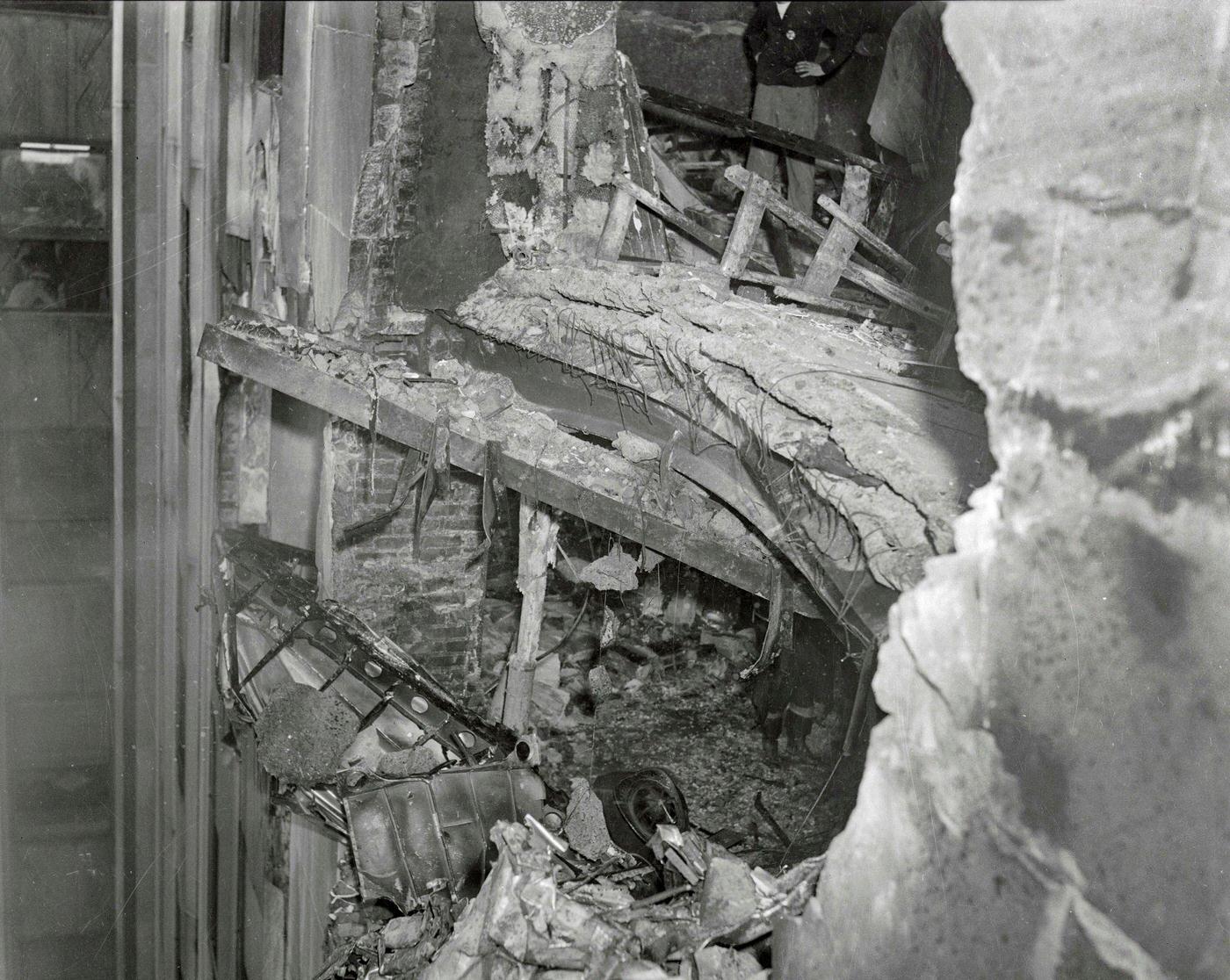On July 28, 1945, a B-25 Mitchell bomber aircraft, piloted by United States Army Air Forces pilot Lt. Colonel William Franklin Smith Jr., crashed into the Empire State Building in New York City. The incident occurred just before 9:40 a.m. local time.
The aircraft, which was on a routine training mission, had taken off from New Bedford Municipal Airport in Massachusetts and was supposed to land at LaGuardia Airport in Queens, New York. However, due to heavy fog and low visibility, Smith became disoriented and flew into the Empire State Building.
The aircraft struck the 79th floor of the building, causing a massive explosion and fire. The impact created a hole approximately 20 feet wide and 20 feet high. The fire caused significant damage to the building, and debris from the crash fell to the streets below.
The crash resulted in the deaths of 14 people, including 11 office workers and Smith and his two crew members. An additional 26 people were injured. Most of the fatalities occurred on the 79th floor, where the impact occurred, and on the 80th floor, which was directly above it.
After the incident, the building was quickly evacuated, and emergency services were called to the scene. The fire was controlled within 40 minutes, but the building sustained significant damage. The building was closed for repairs for several months, and the 79th and 80th floors were closed to the public for decades.
The incident was the first and only time an aircraft crashed into a skyscraper. The National Transportation Safety Board (NTSB) investigated the incident and determined that the cause of the crash was Smith’s failure to maintain proper altitude and visibility. The investigation also found that there were no mechanical issues with the aircraft.
In the aftermath of the incident, new procedures were implemented to prevent similar incidents from occurring. These included the installation of radar and communication equipment at airports and the creation of new flight patterns to avoid the city’s skyscrapers.
The Empire State Building, which is a National Historic Landmark, continues to stand as one of the most iconic buildings in New York City. The crash site on the 79th floor is not open to the public, but a plaque commemorating the incident’s victims can be found on the building’s observation deck.


